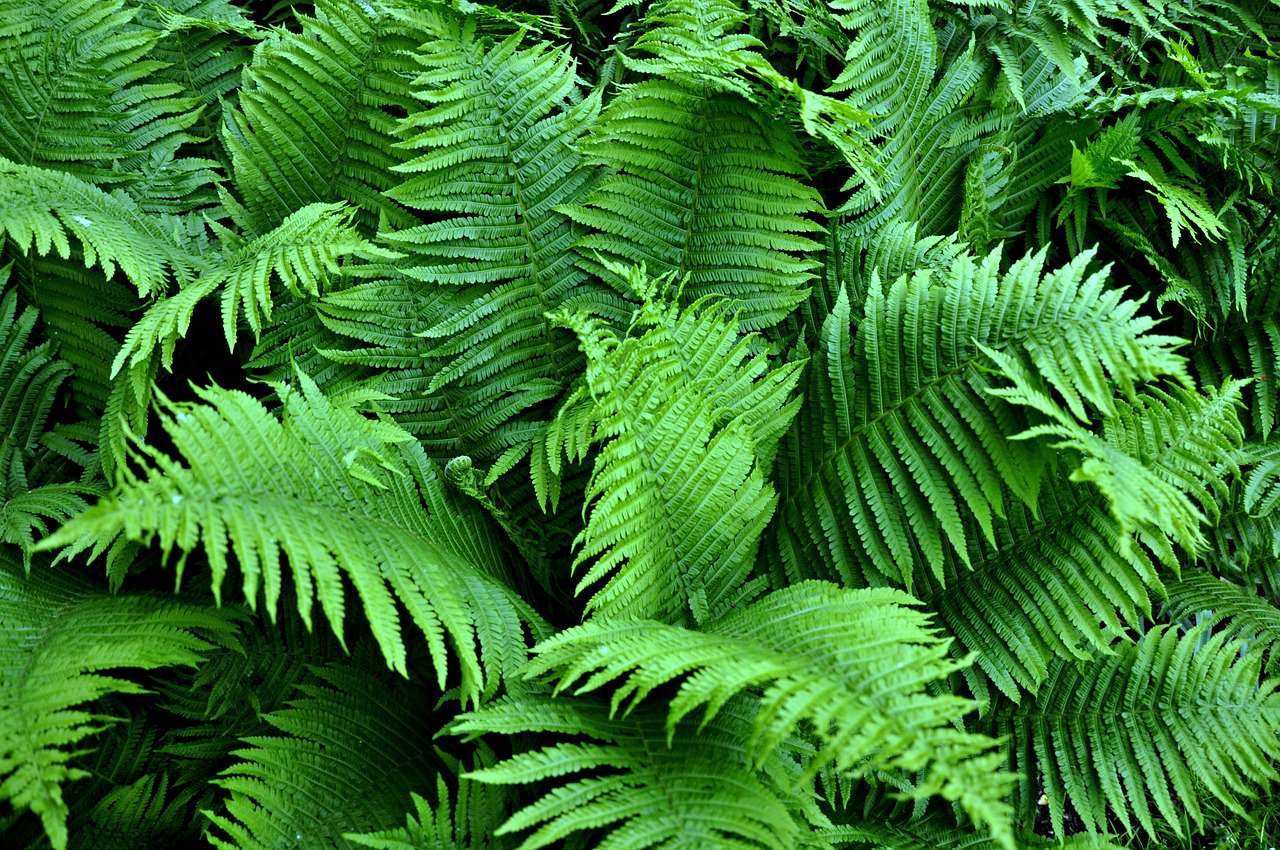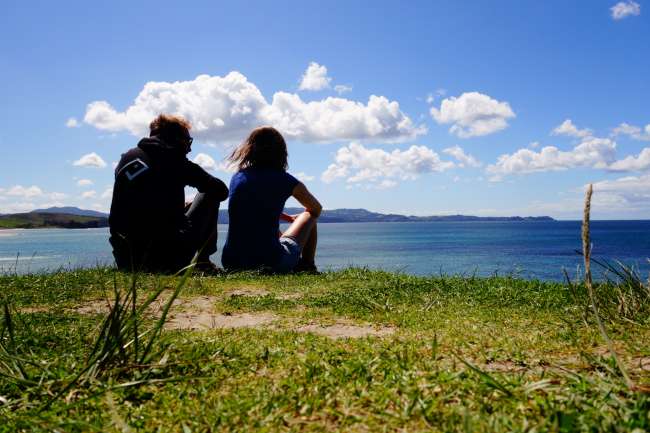Mangonui, Taupo, Puketi Forest
प्रकाशित: 08.11.2016
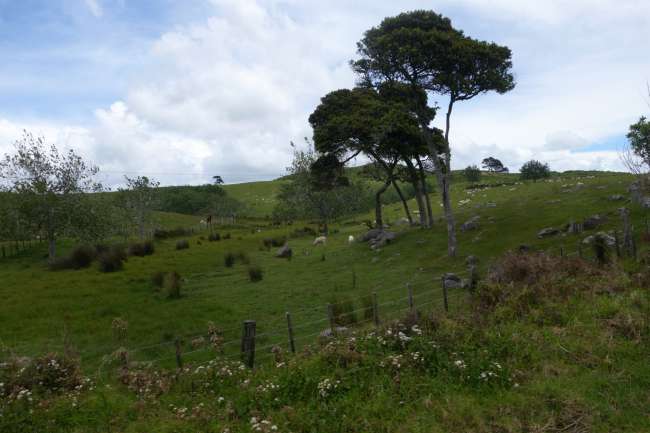
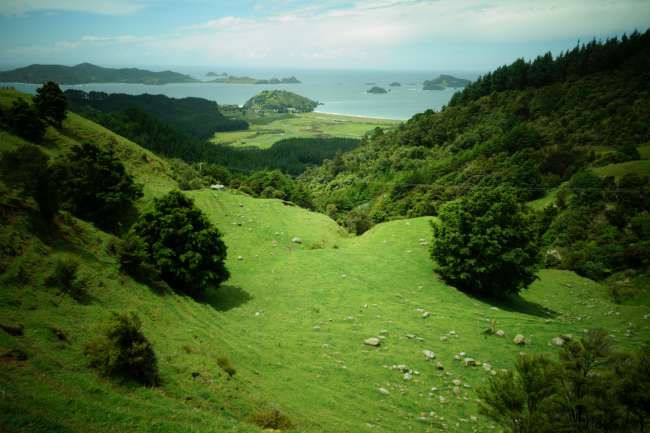
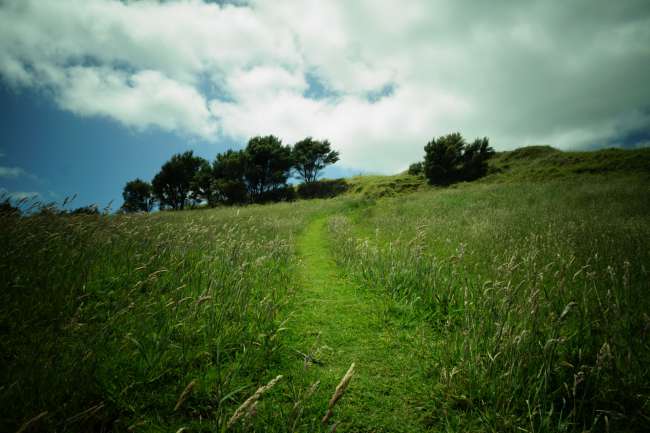
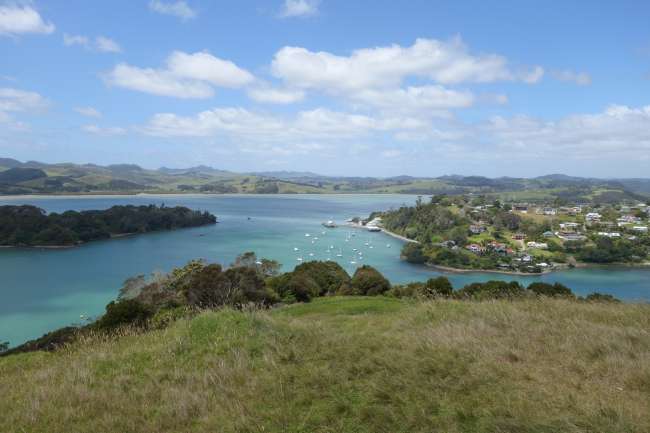
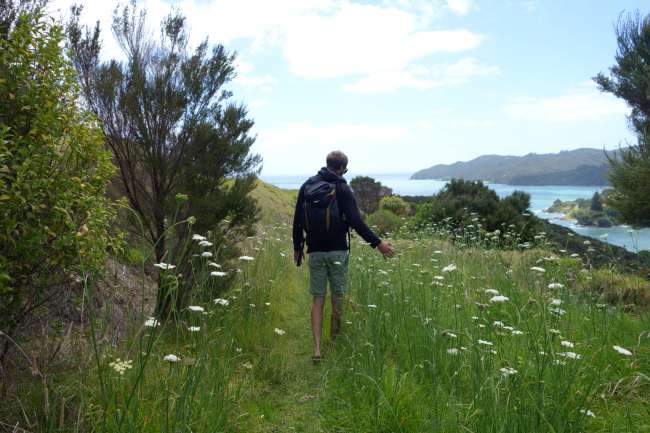
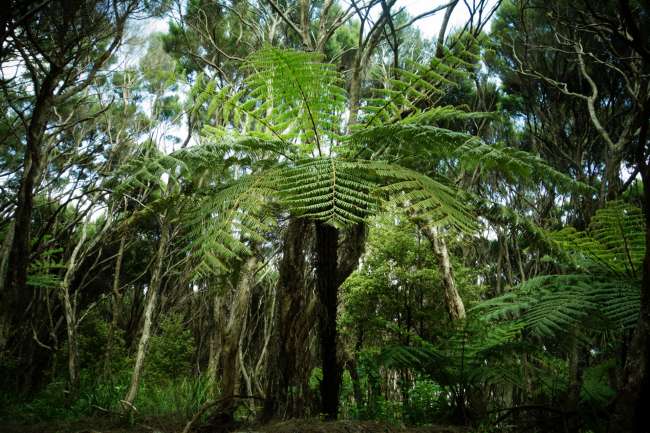
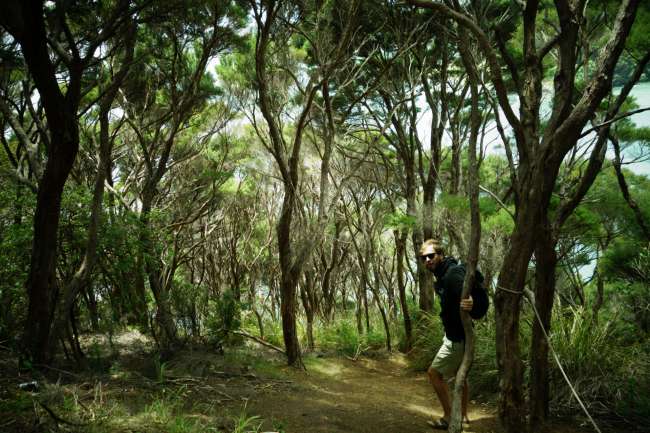
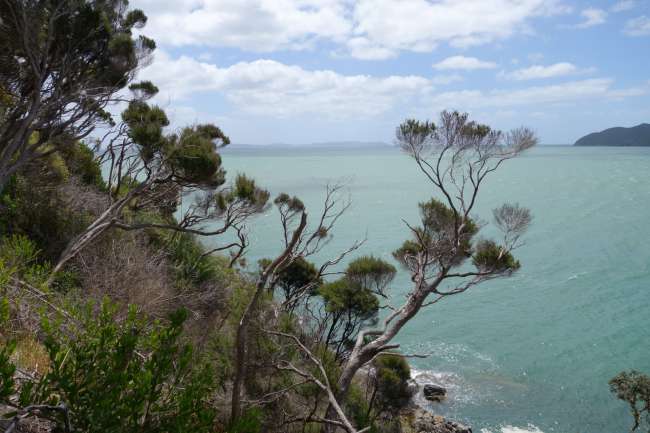
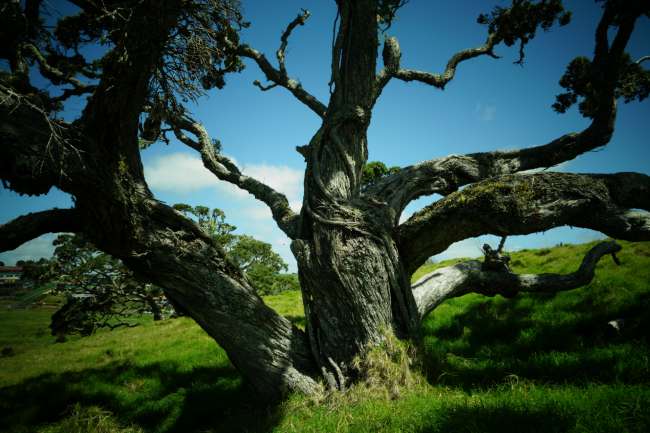
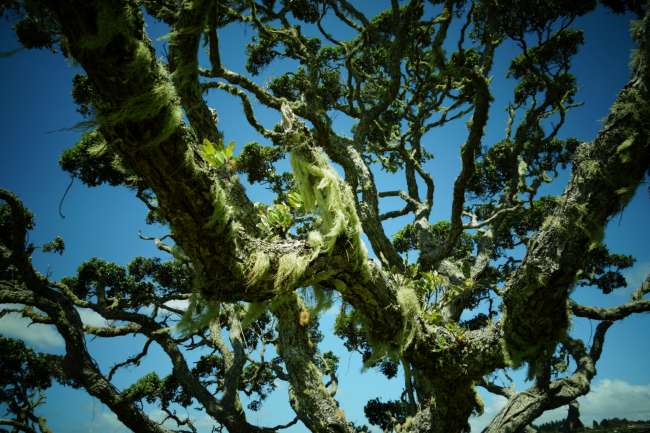
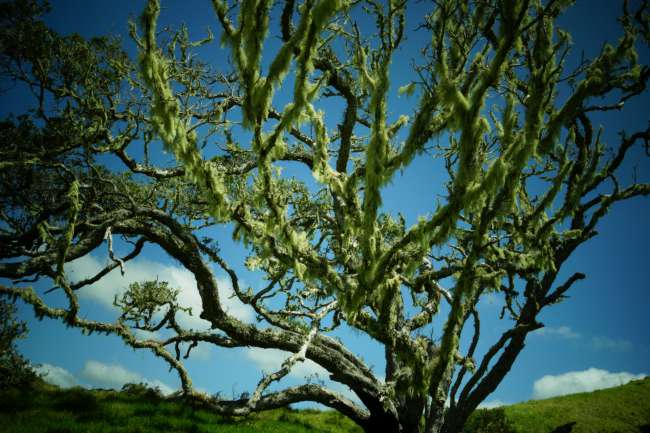
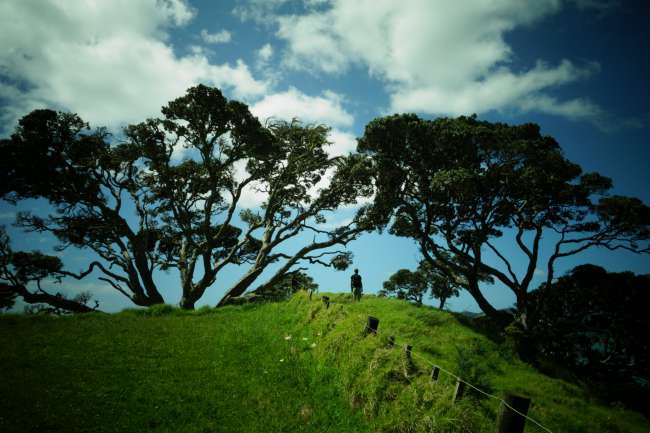
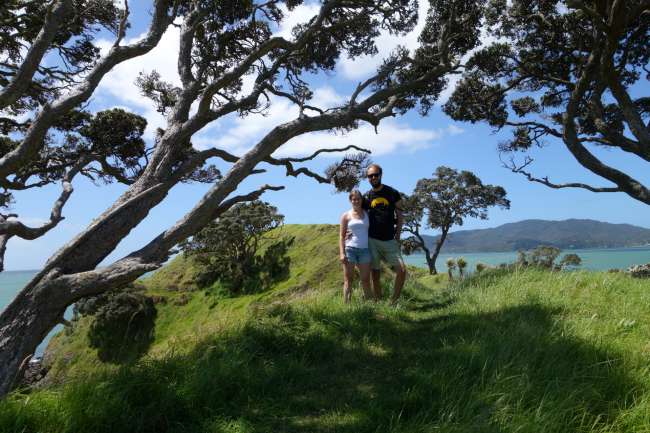
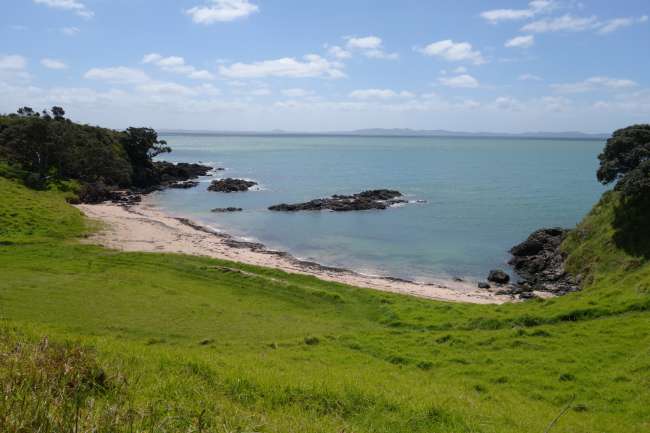
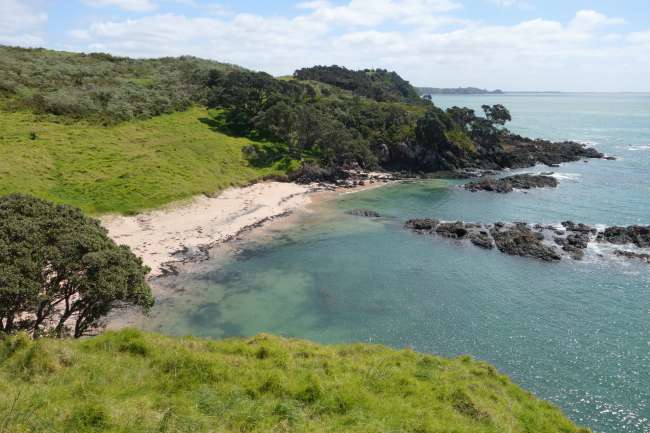
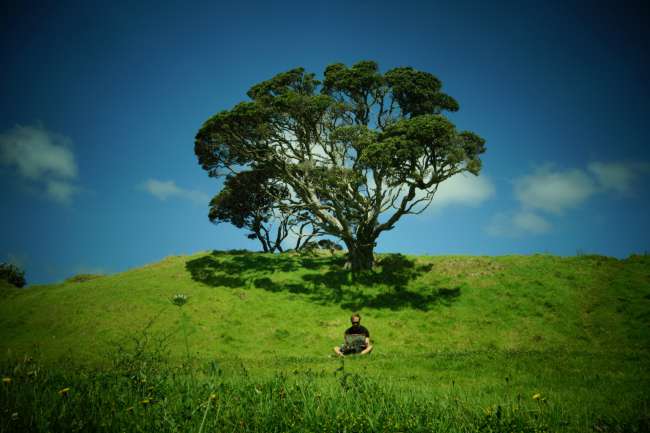
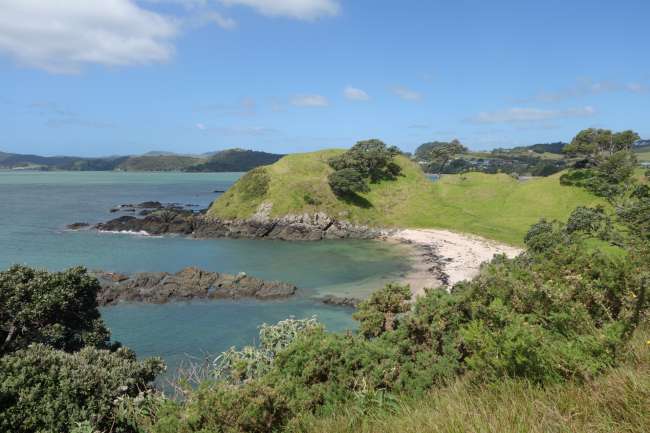
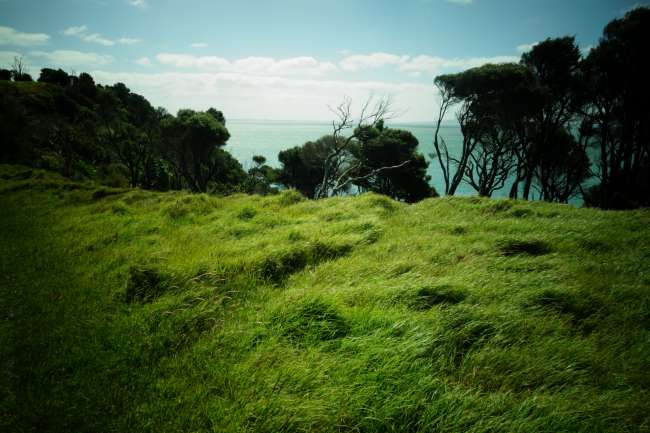
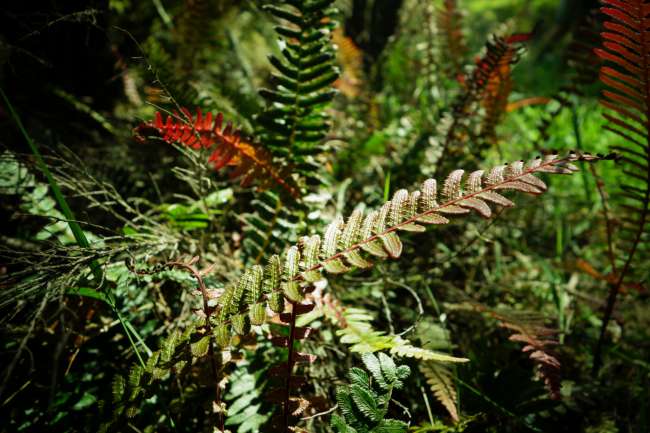
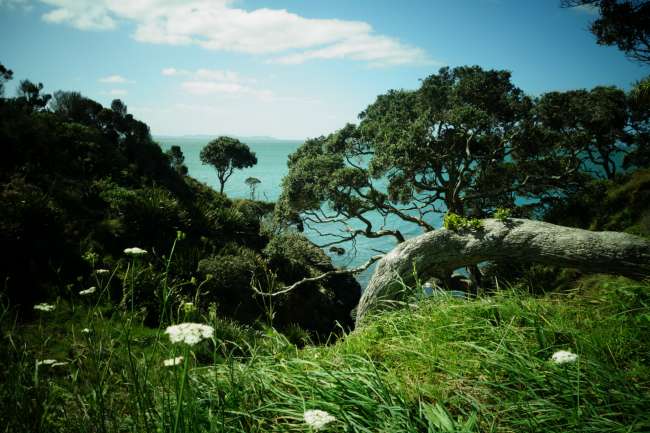
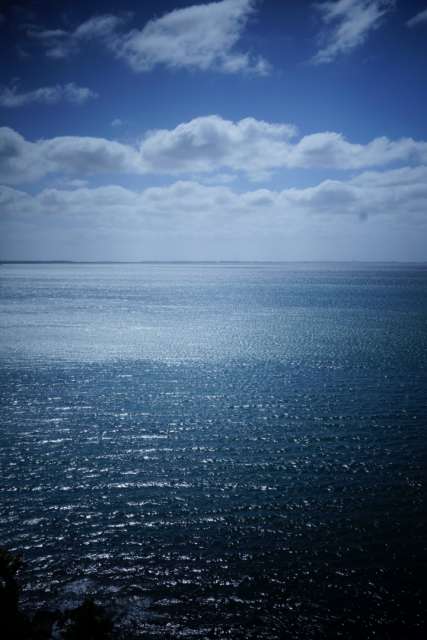
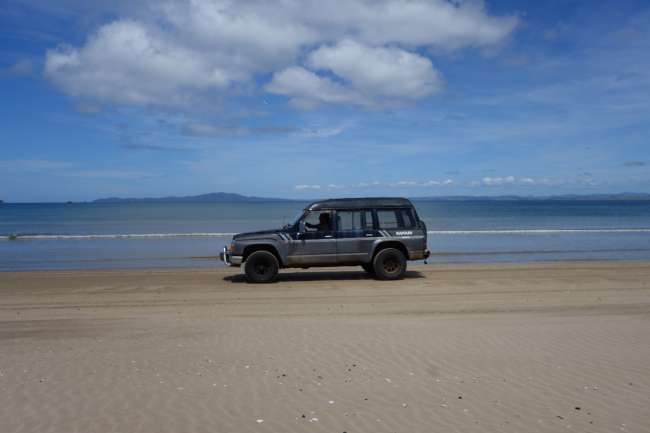
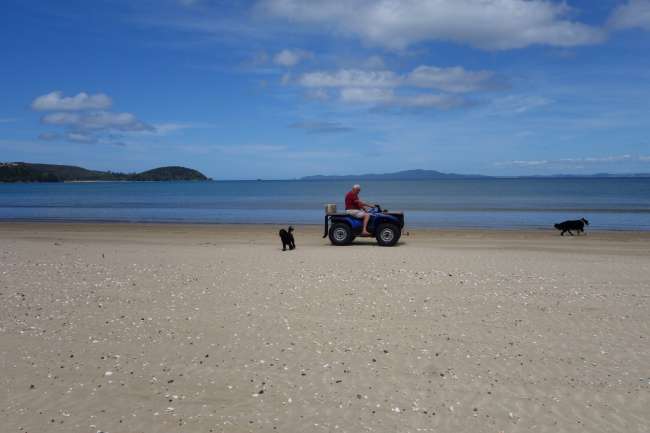
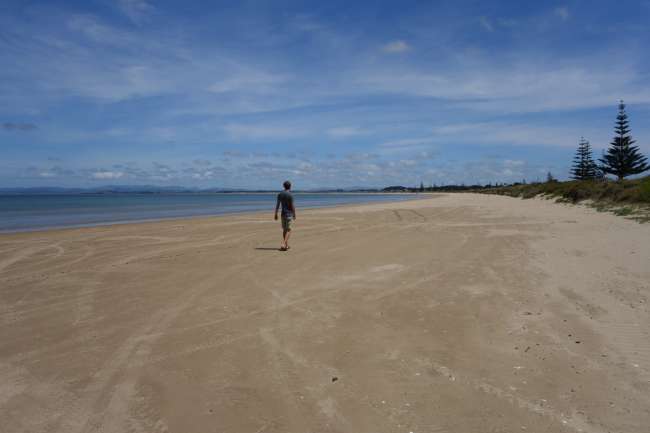

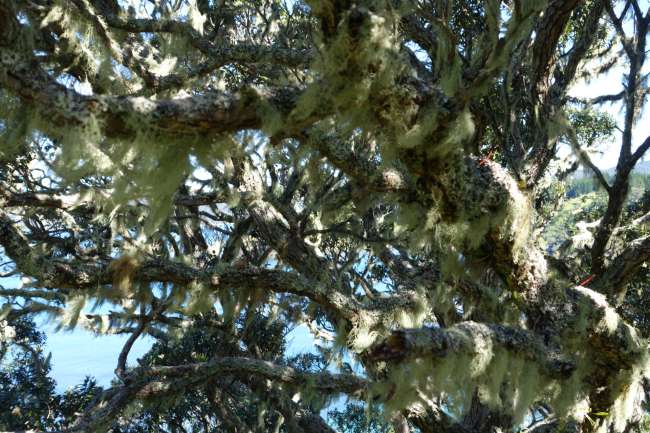
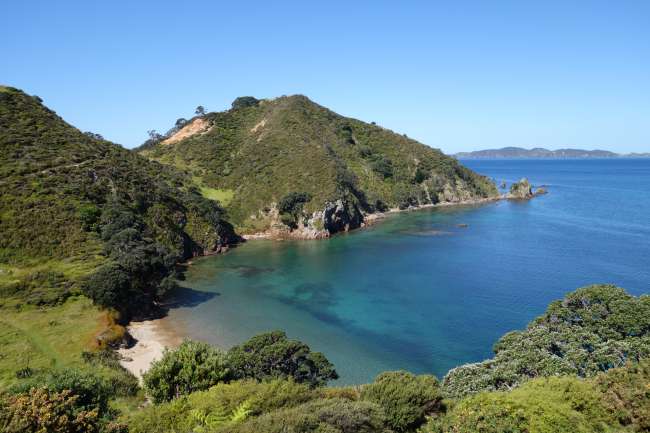
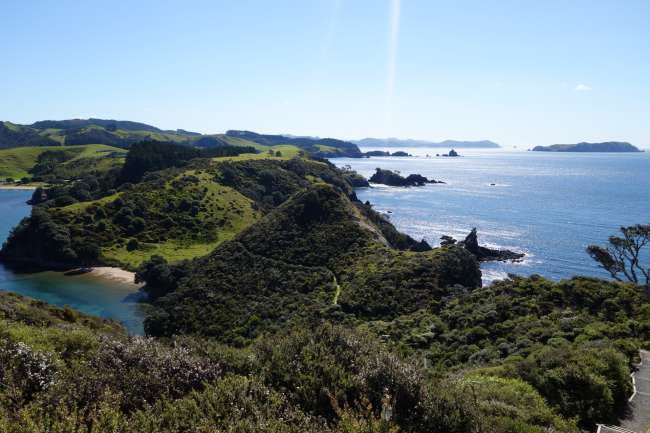
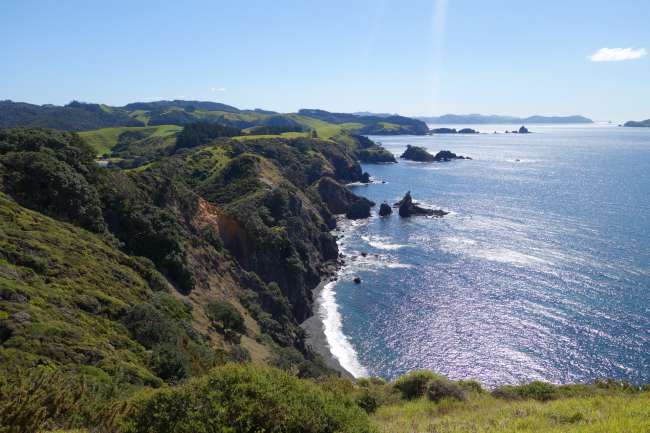
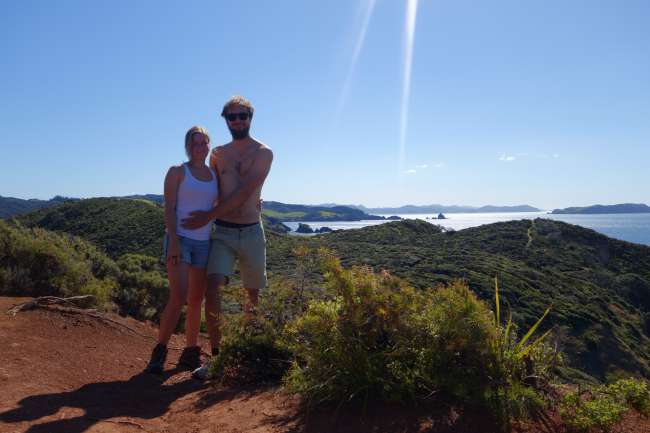
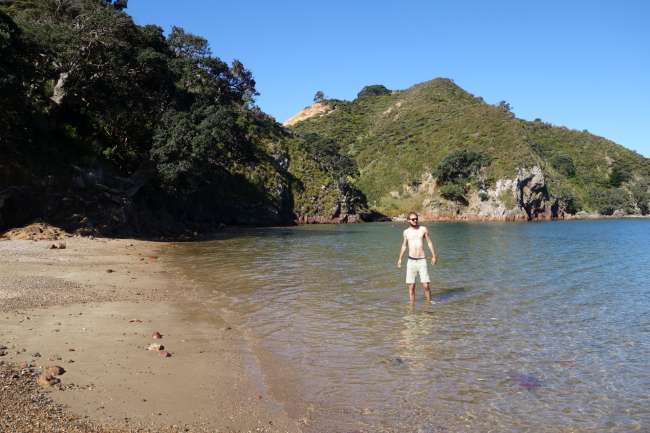
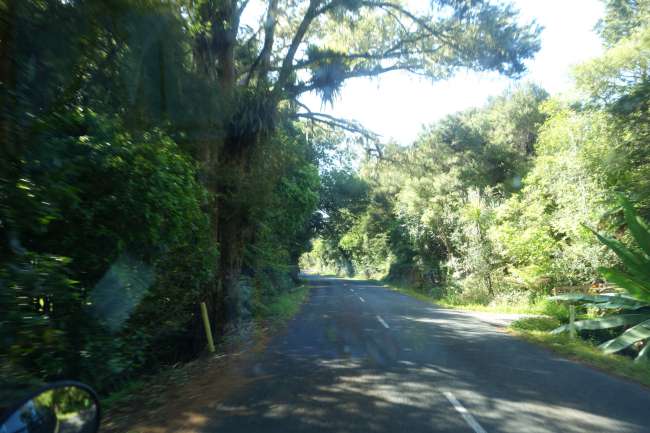
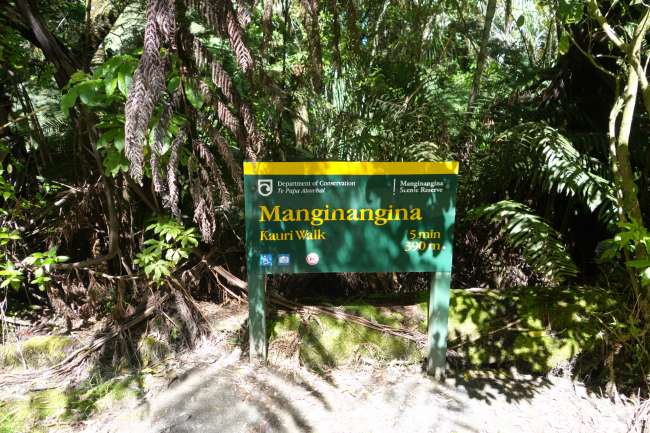
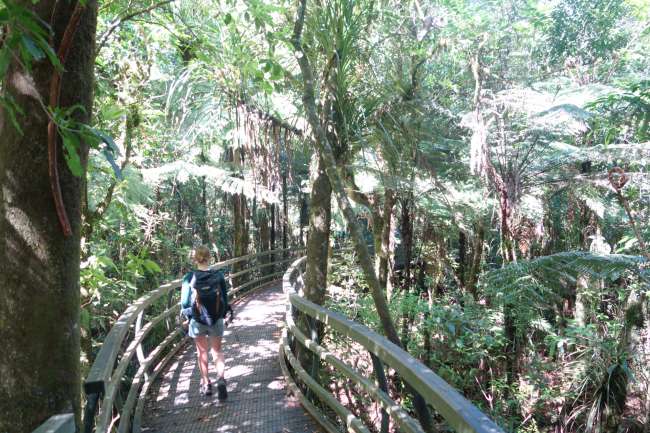
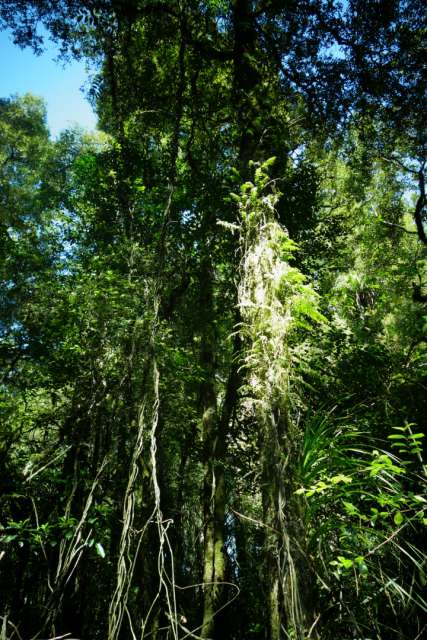
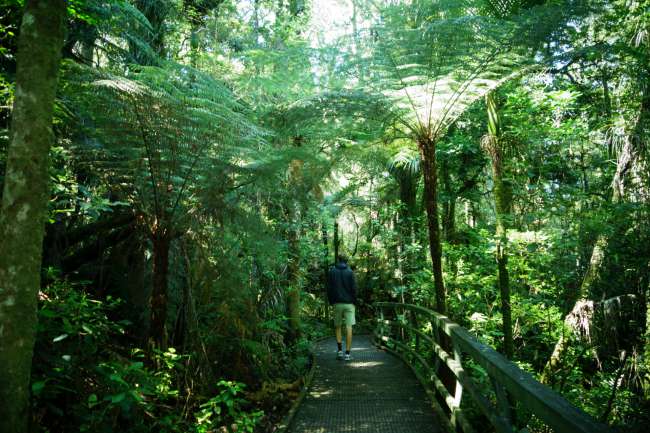
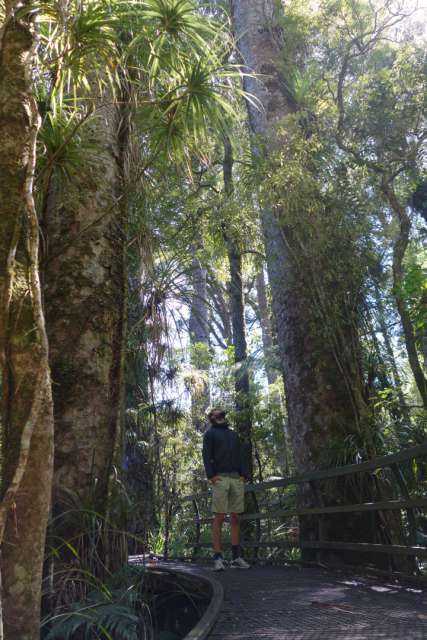
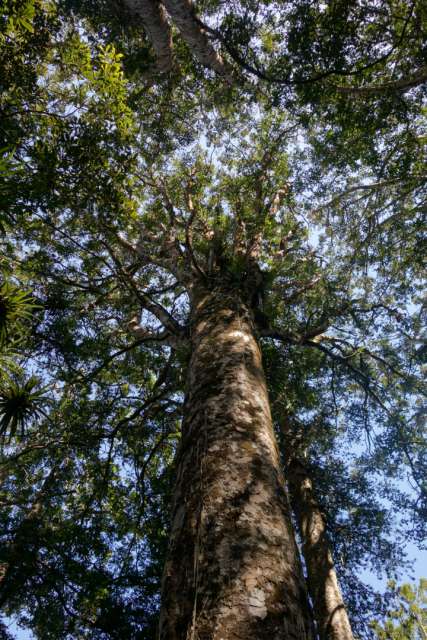
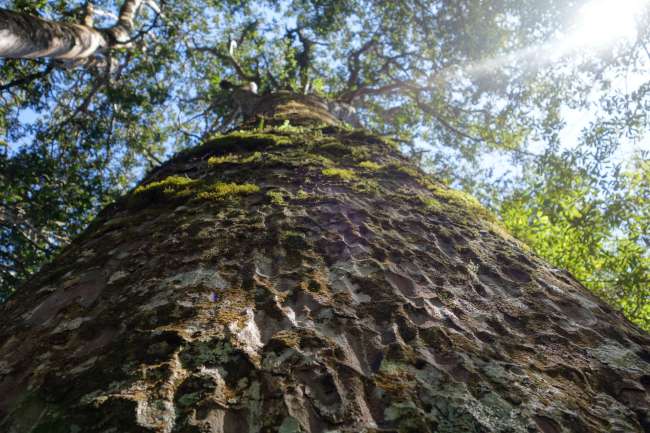
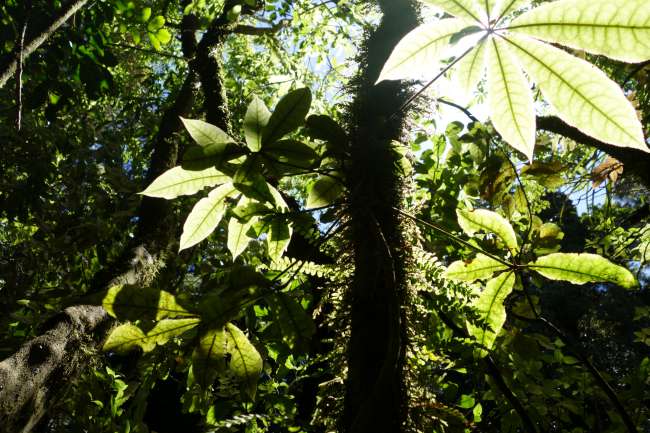
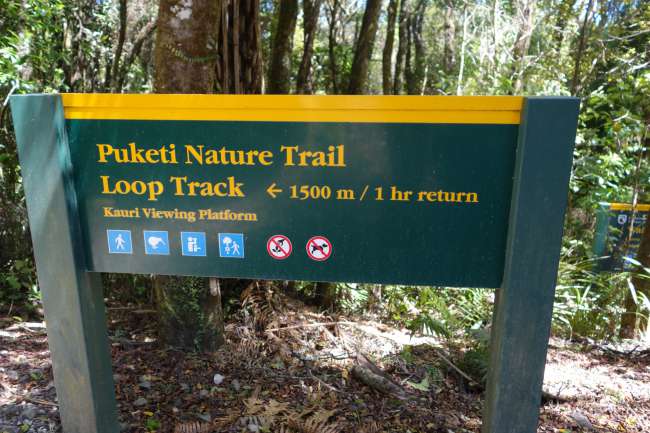
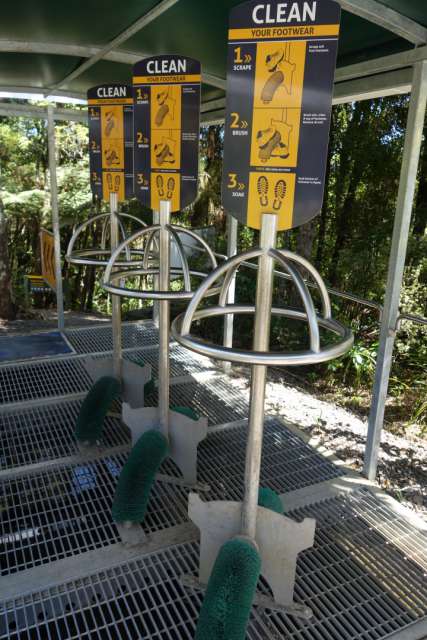
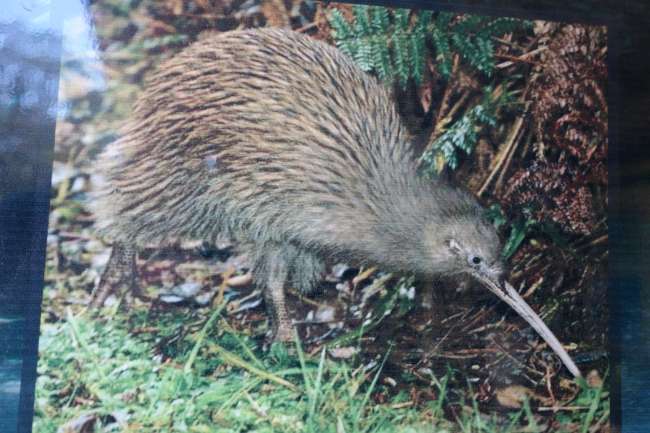
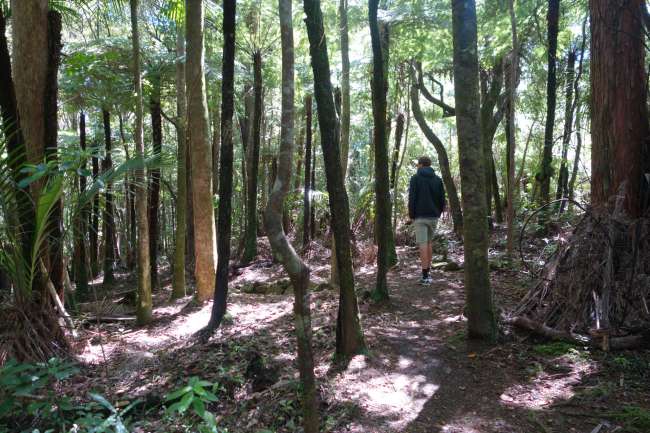
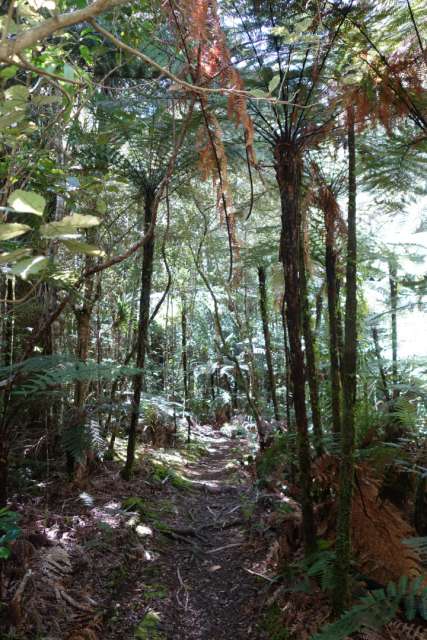

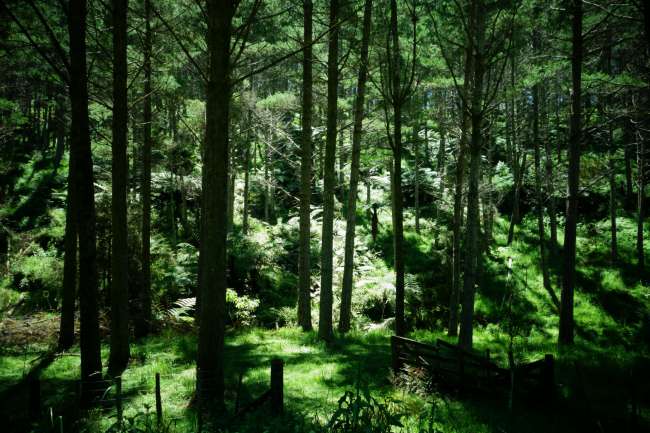
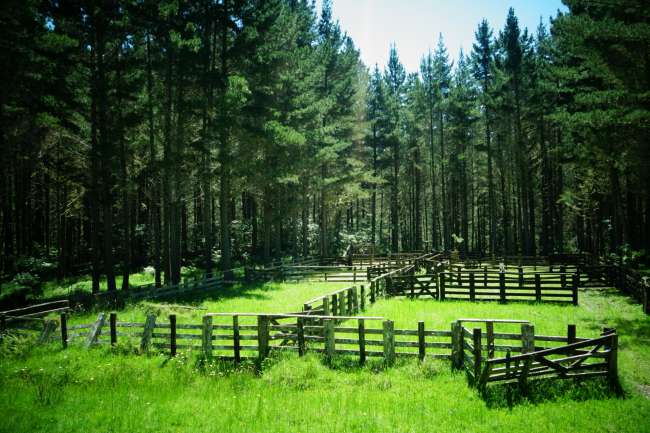
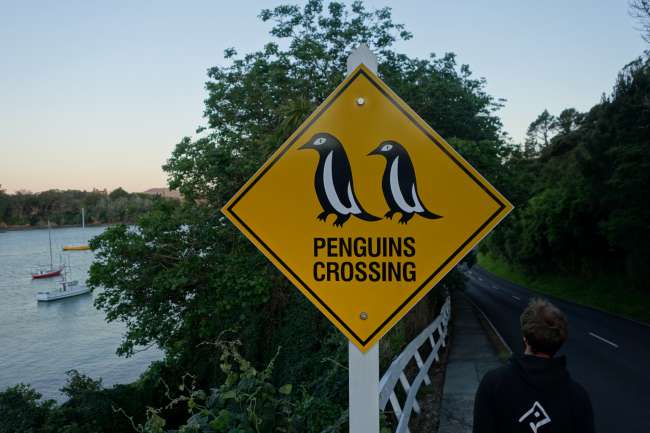
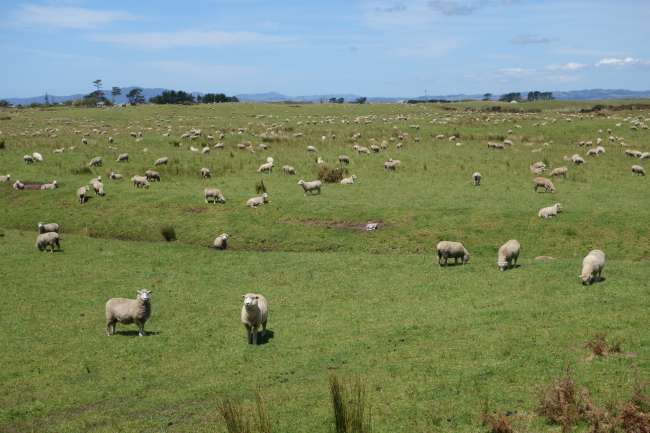
समाचारपत्रस्य सदस्यतां गृहाण

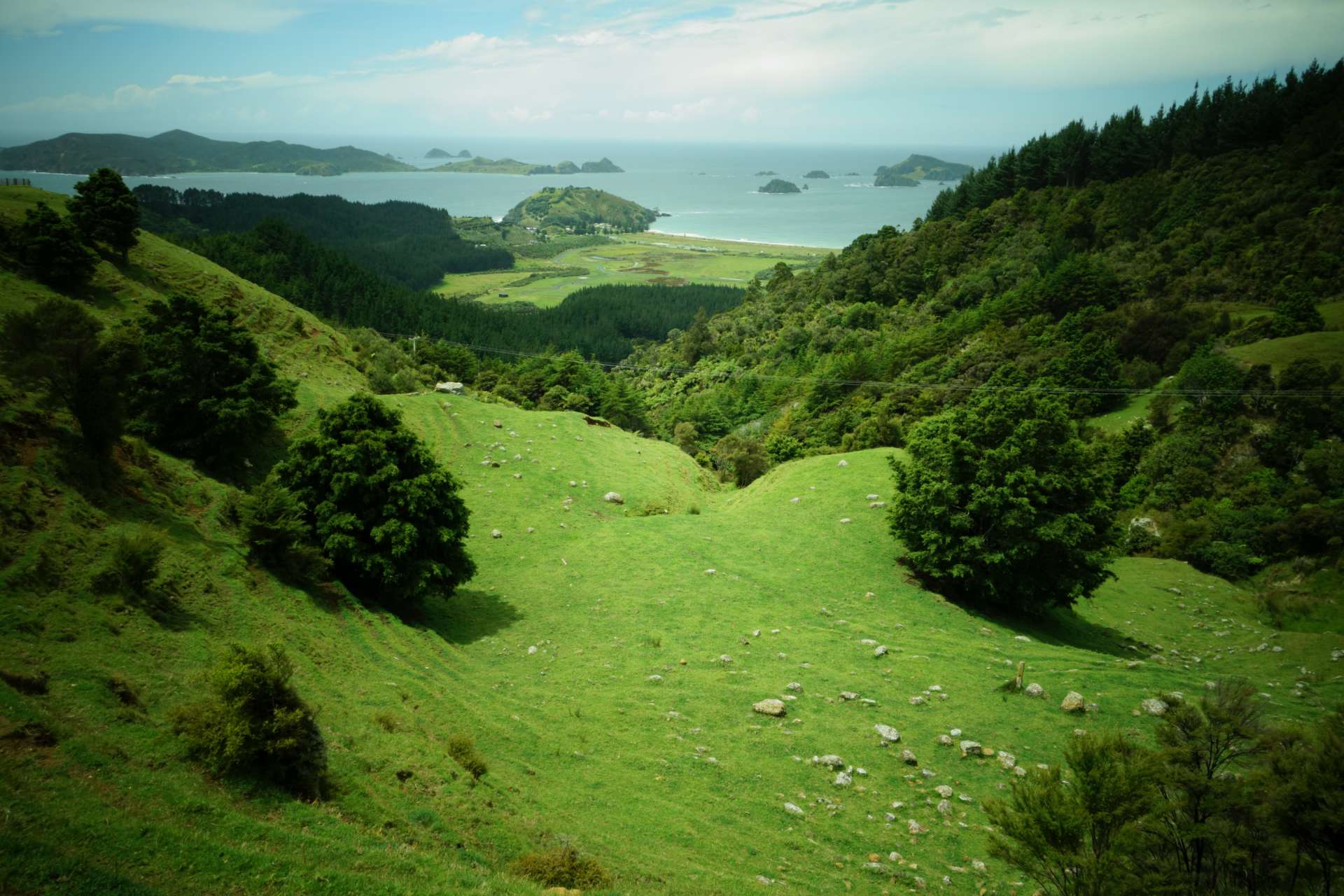
In Mangonui, as an introduction to physical activity after a lazy weekend, we took a smaller track. Small, but really beautiful!
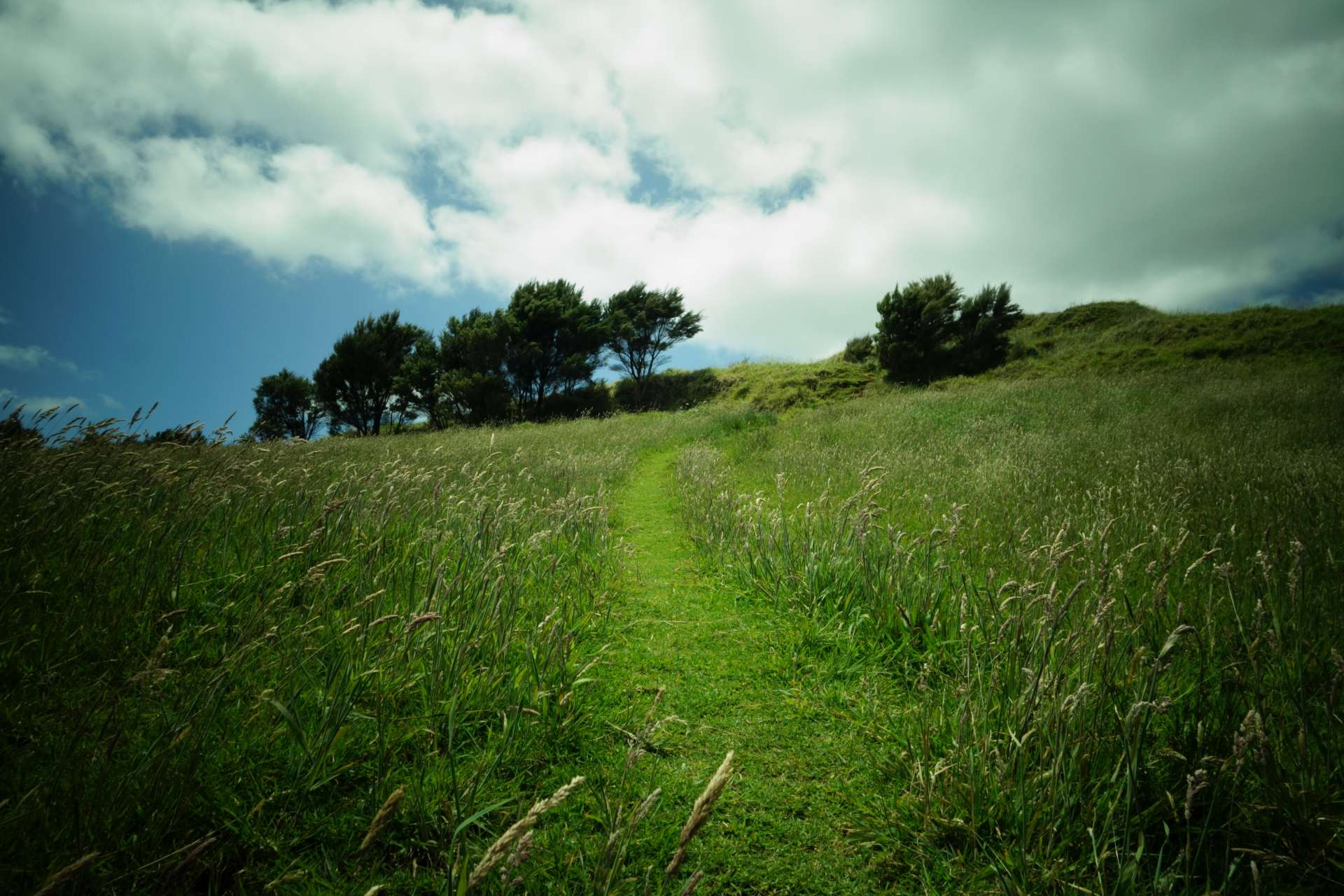
Here you can see the small, idyllic Mangonui:
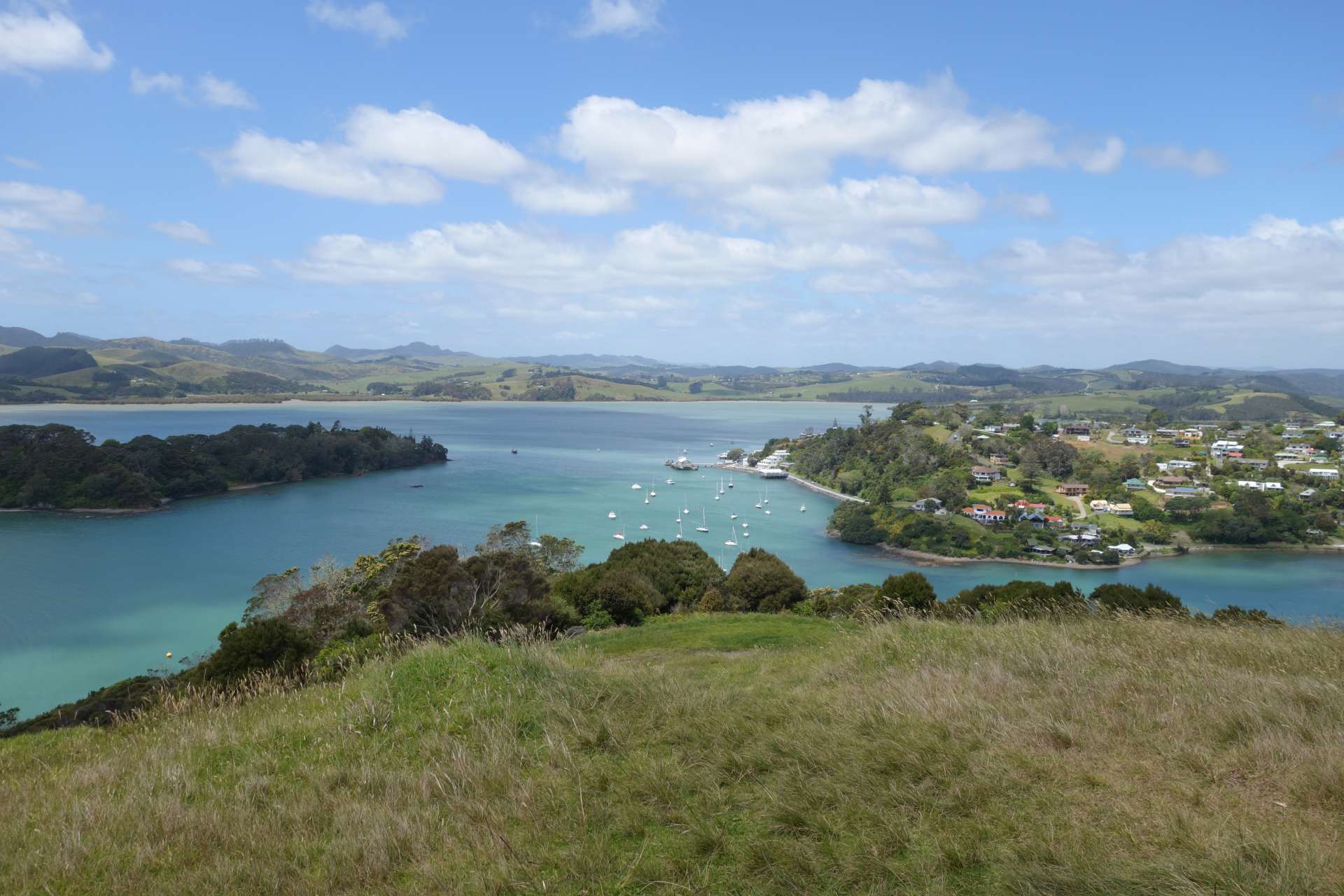
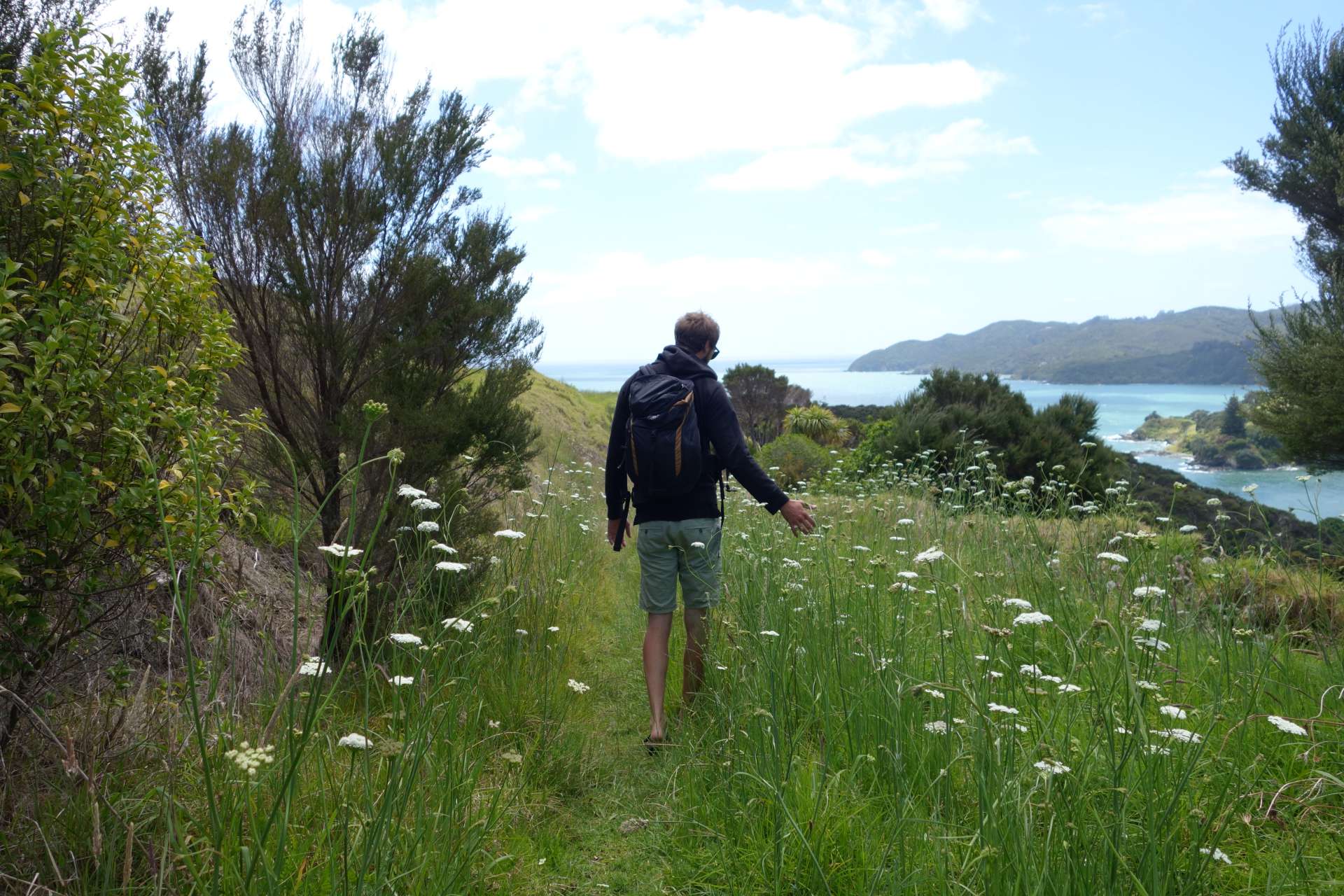

At the end, this path led us to a small wooded piece by the sea, where it soon got lost. Typical of the bush here are these scruffy mini-trees, which are not quite bushes, not yet proper trees:
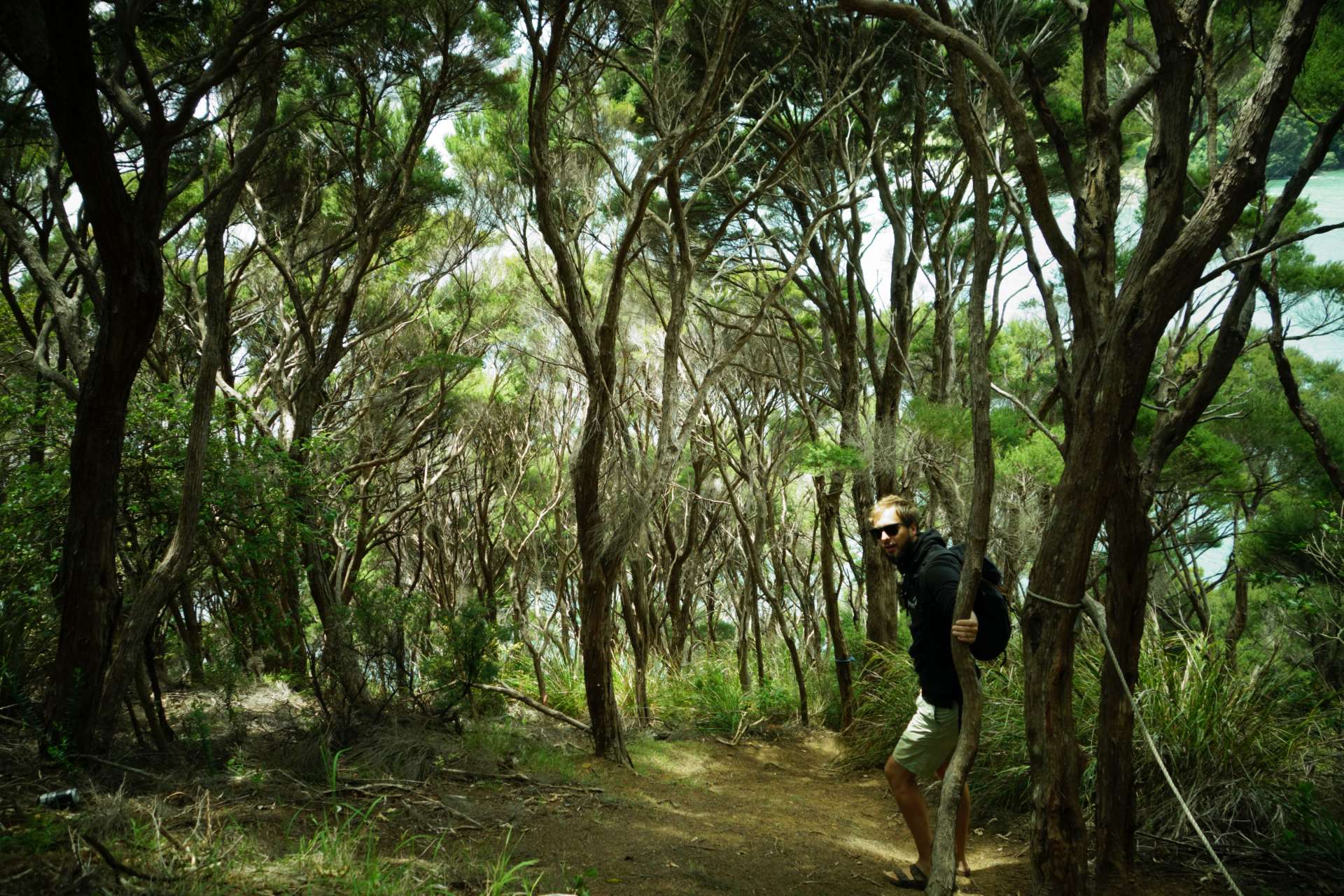

Something very special, on the other hand, were these gnarled, tall trees, which hung with moss and looked a bit like from another world. (Well, Mrs. Biologist? Hmm.. maybe oaks?)
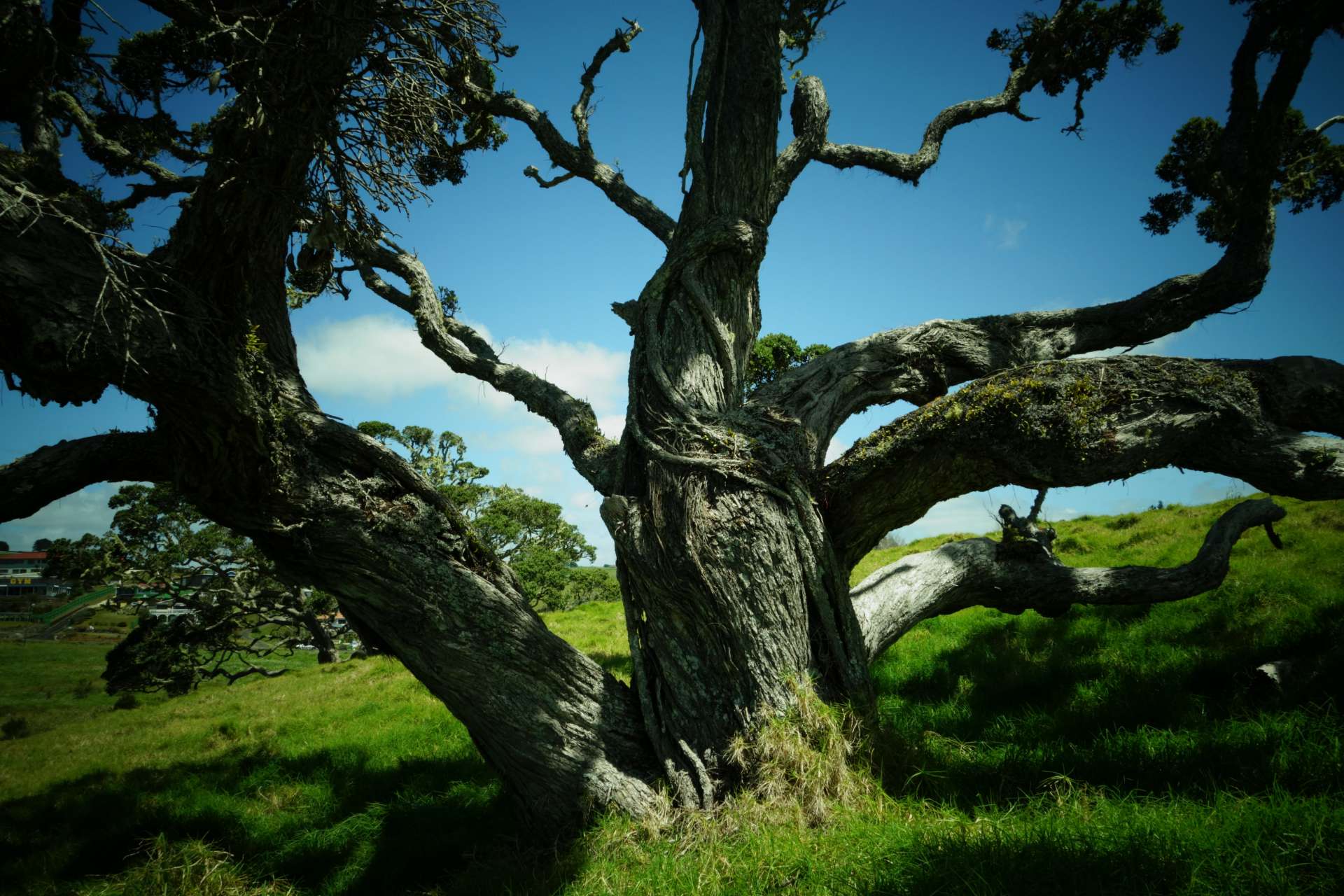
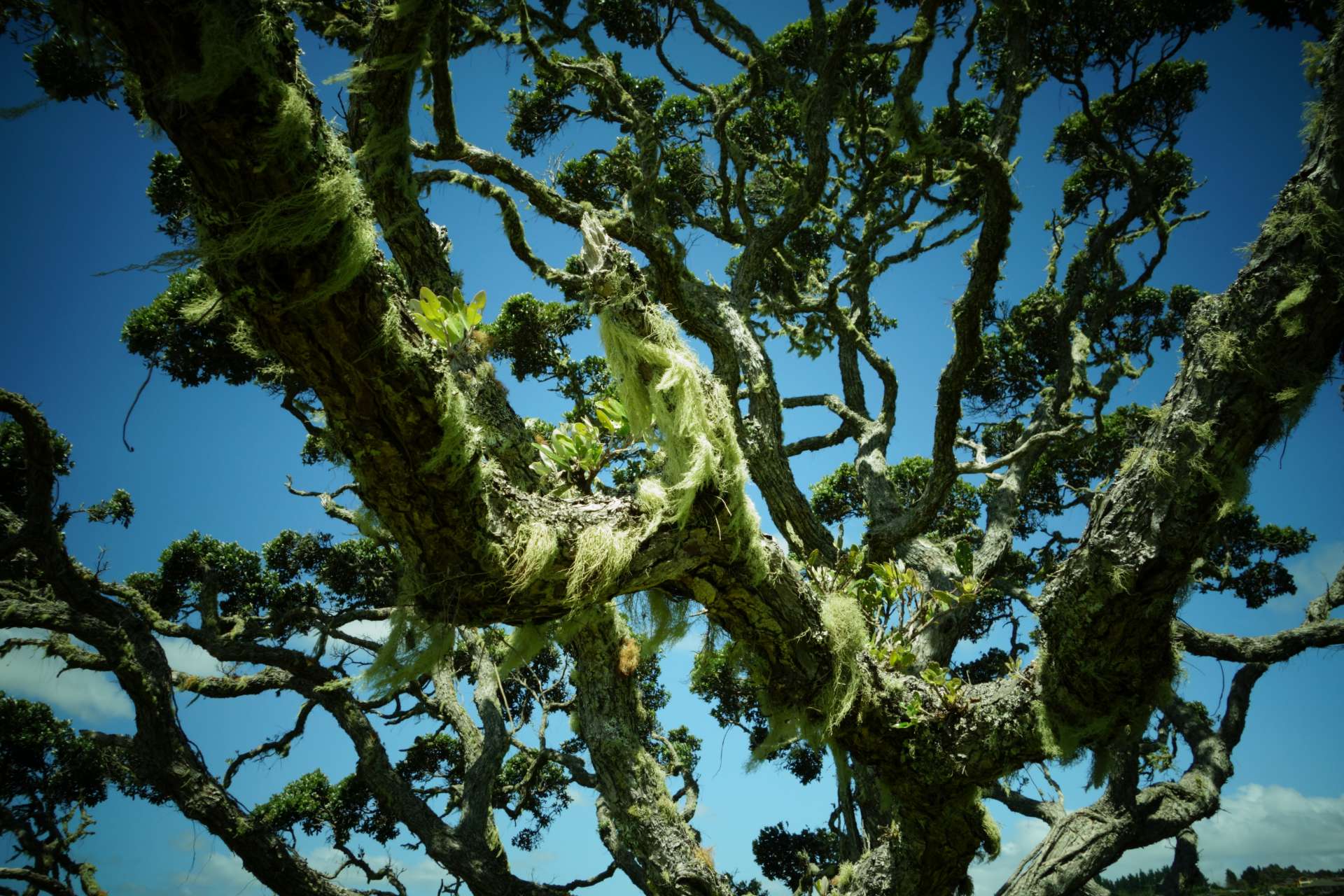
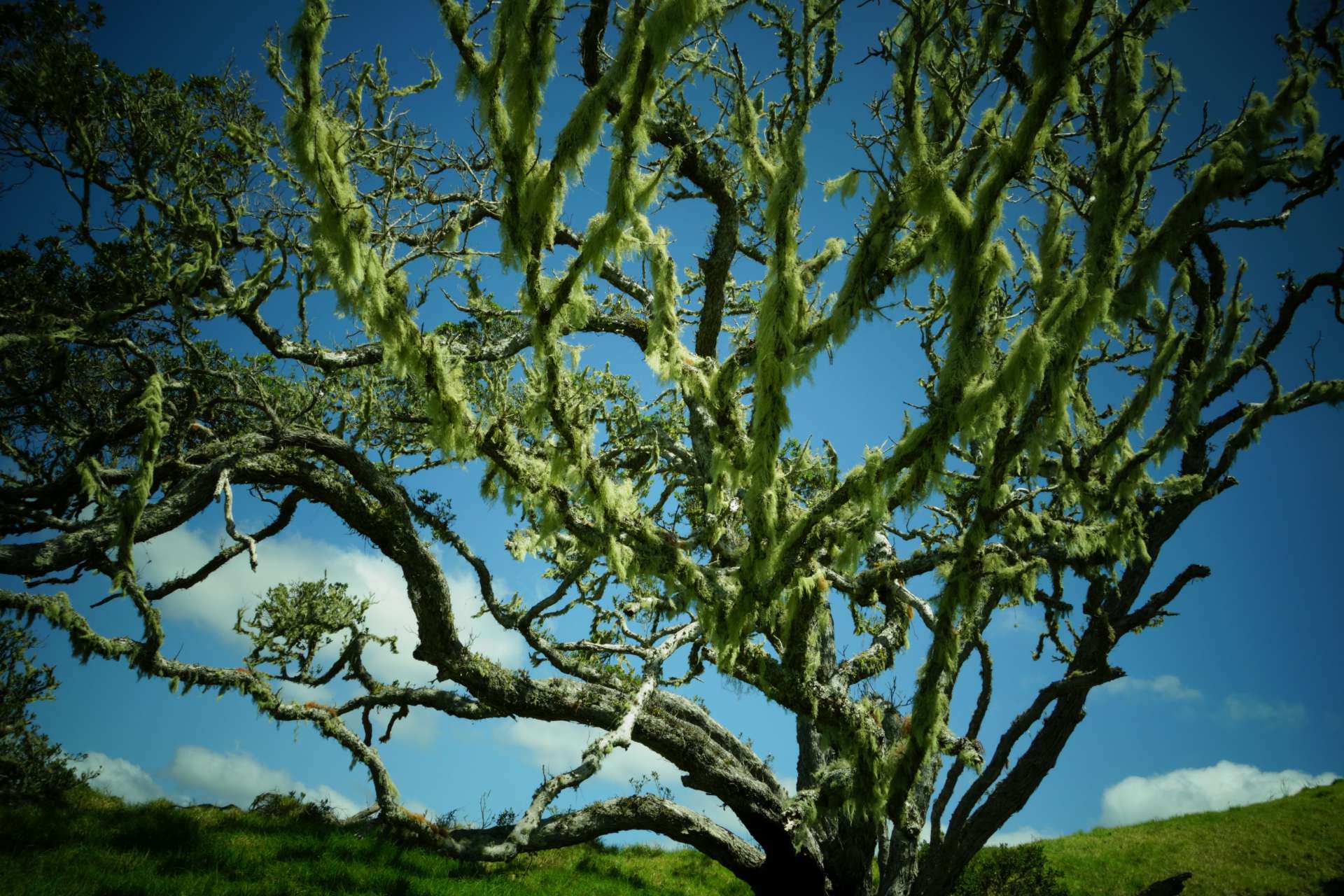
They grow here around Mangonui on the juicy hills to the sea. Beautiful.
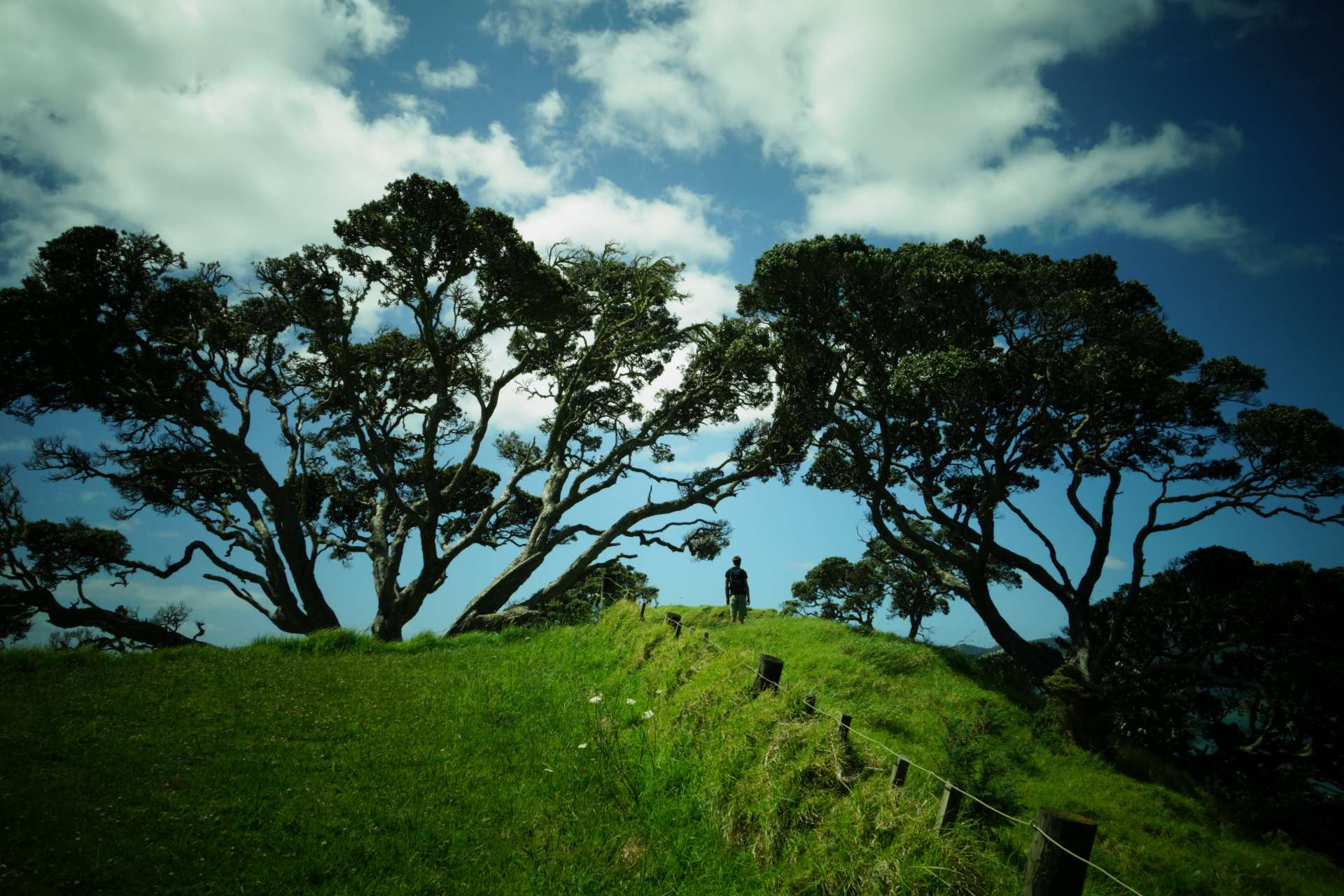
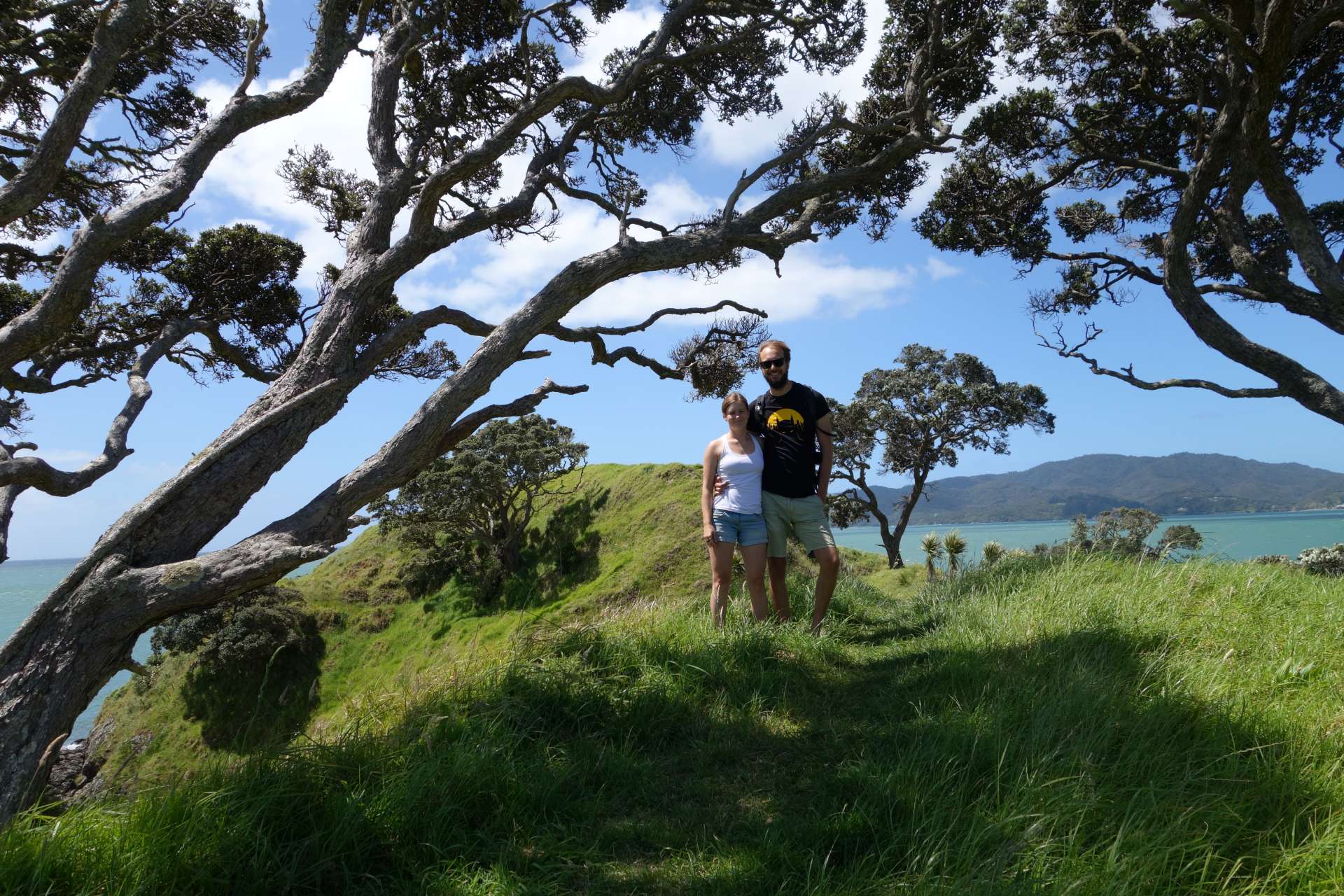
And this is probably our current favorite bay in New Zealand: Small, lush green, with trees on the left and right, clear calm water, no soul in sight.. What more could you want?
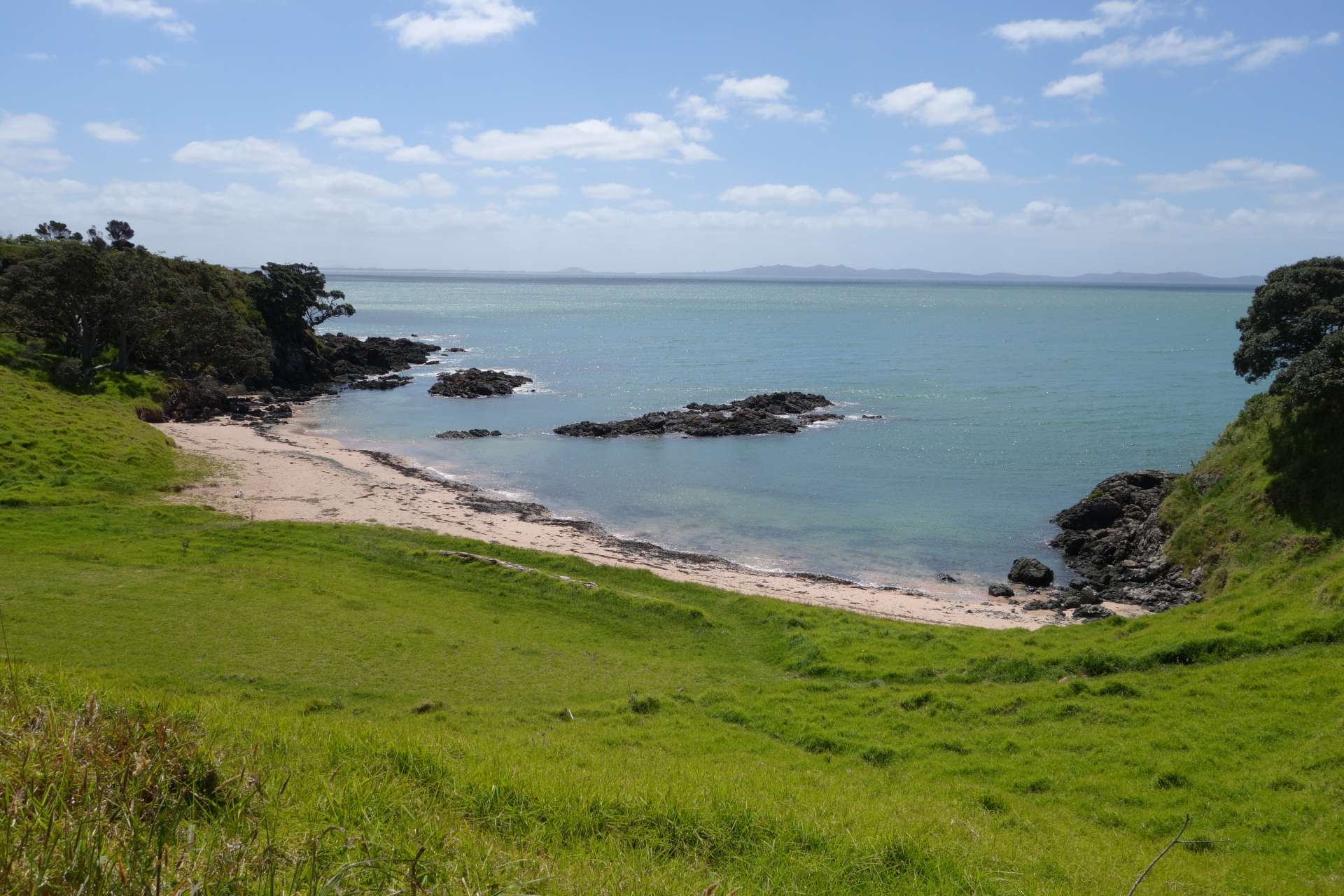
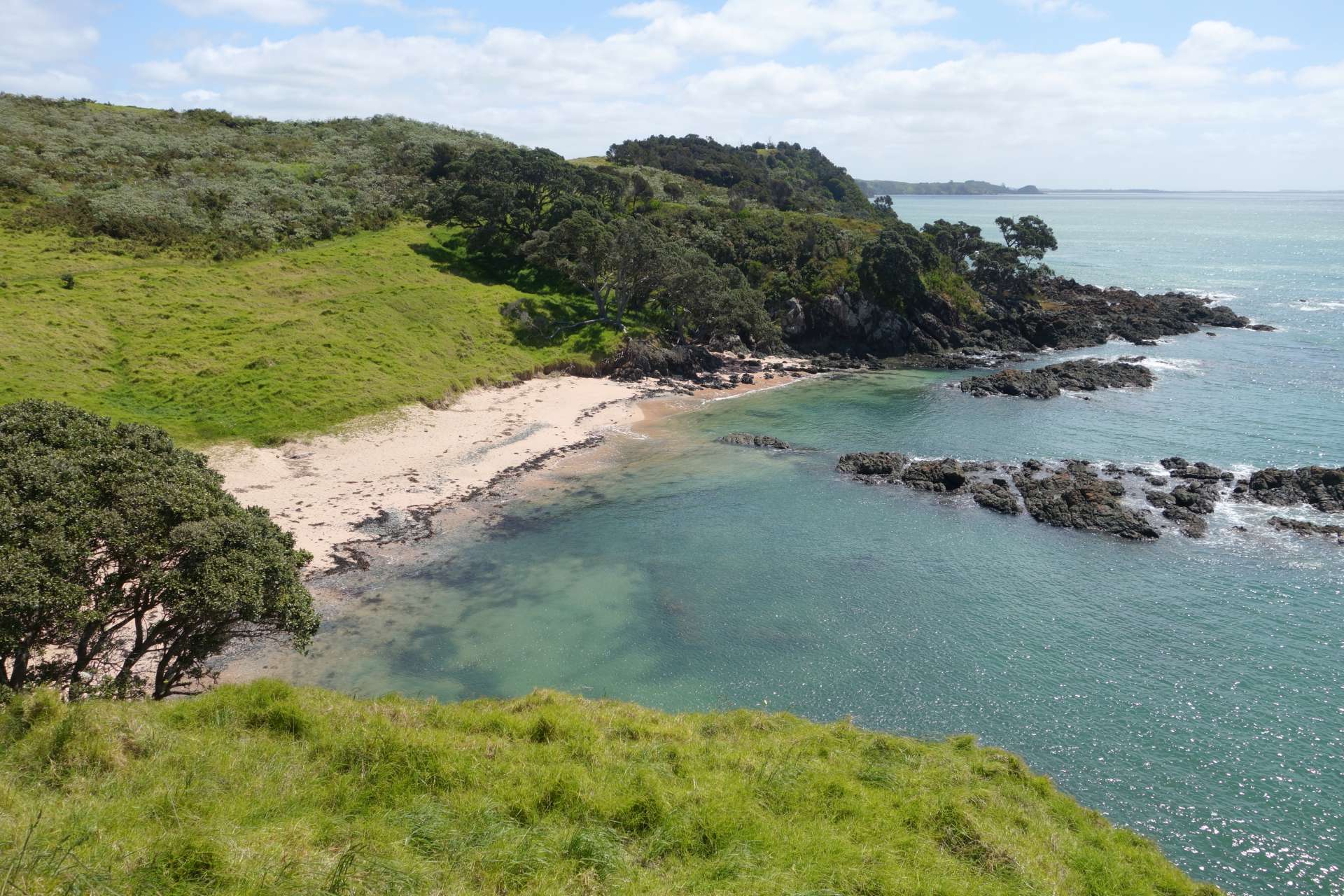
Here you can choose whether you want to read on white sand or lush green:
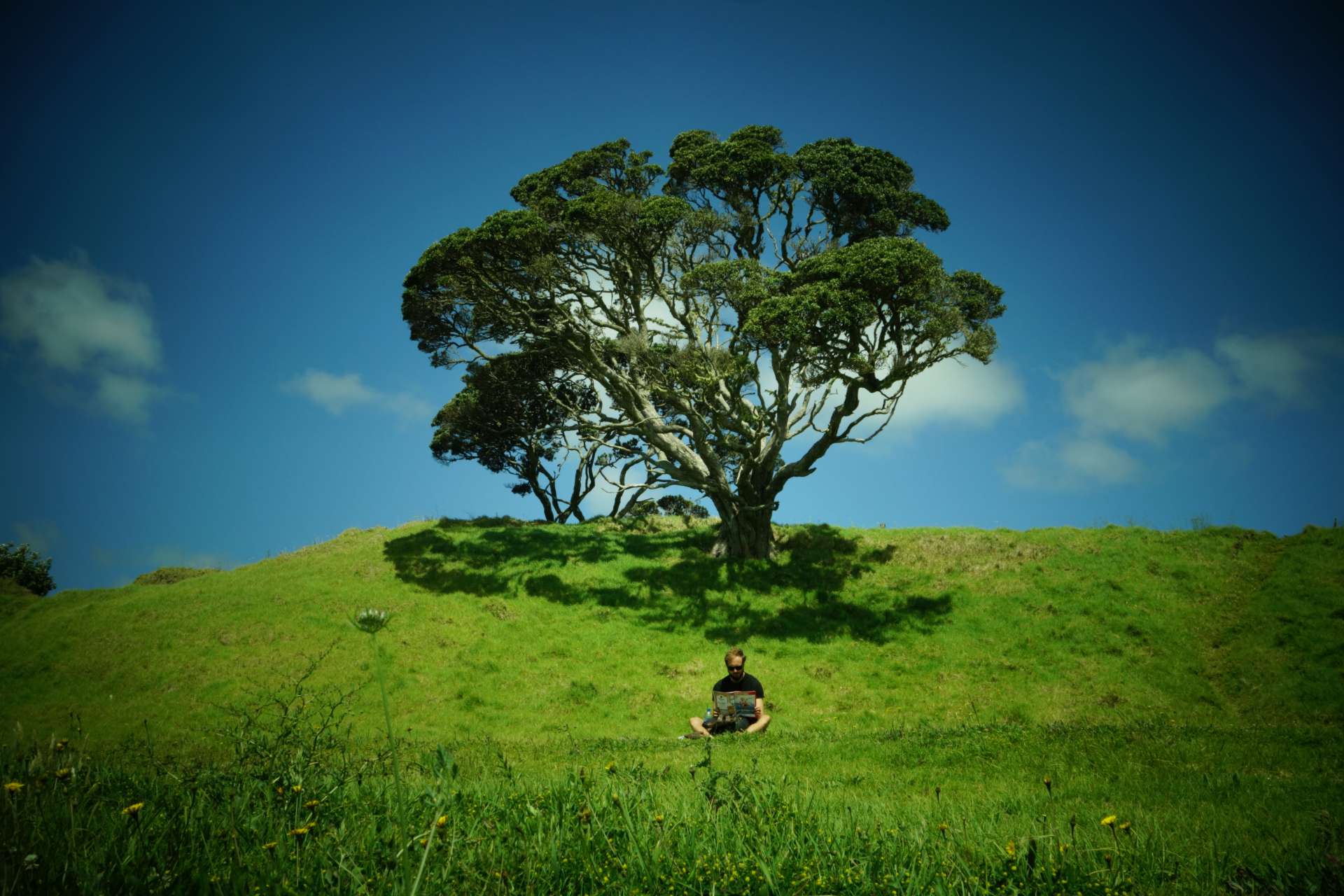

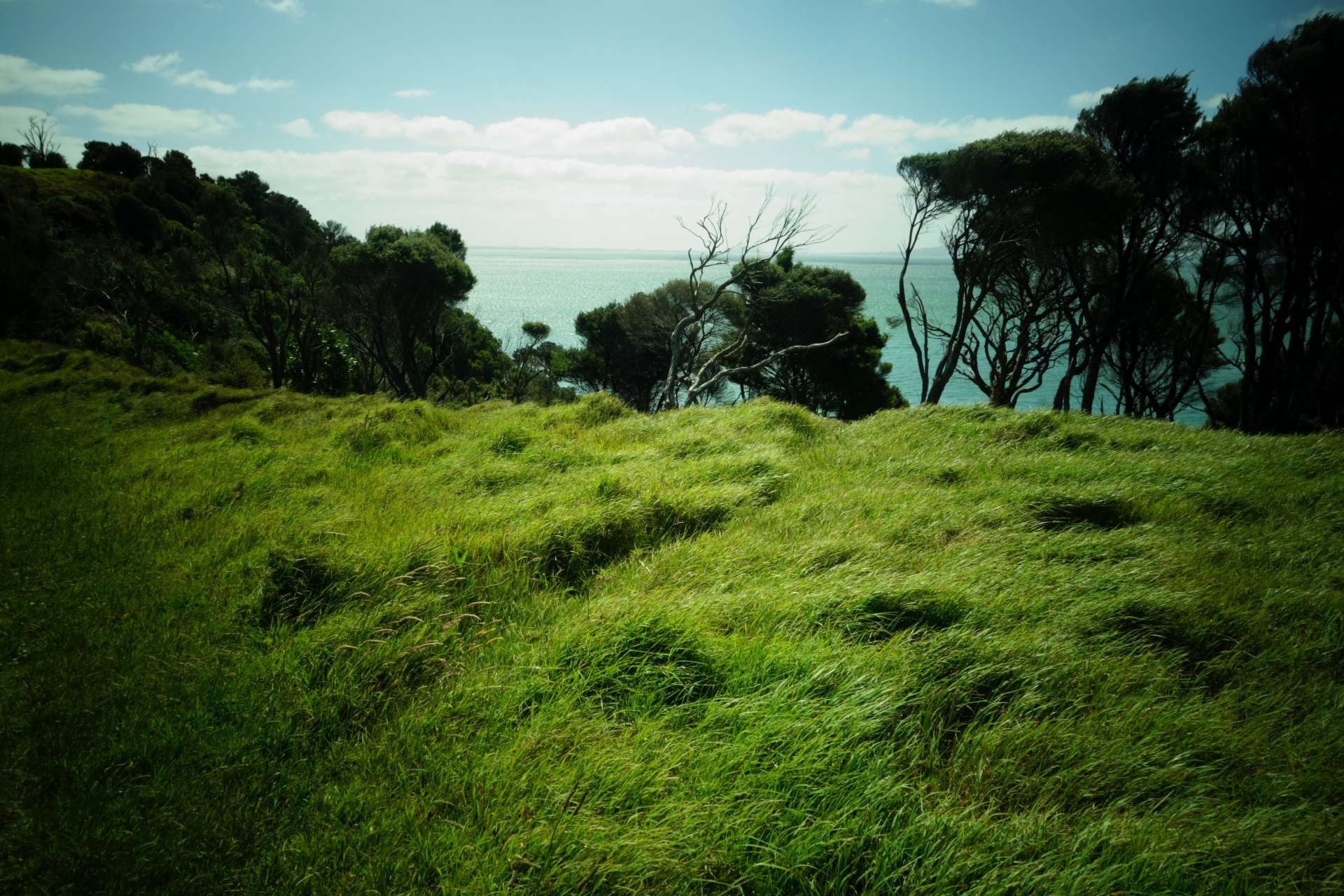

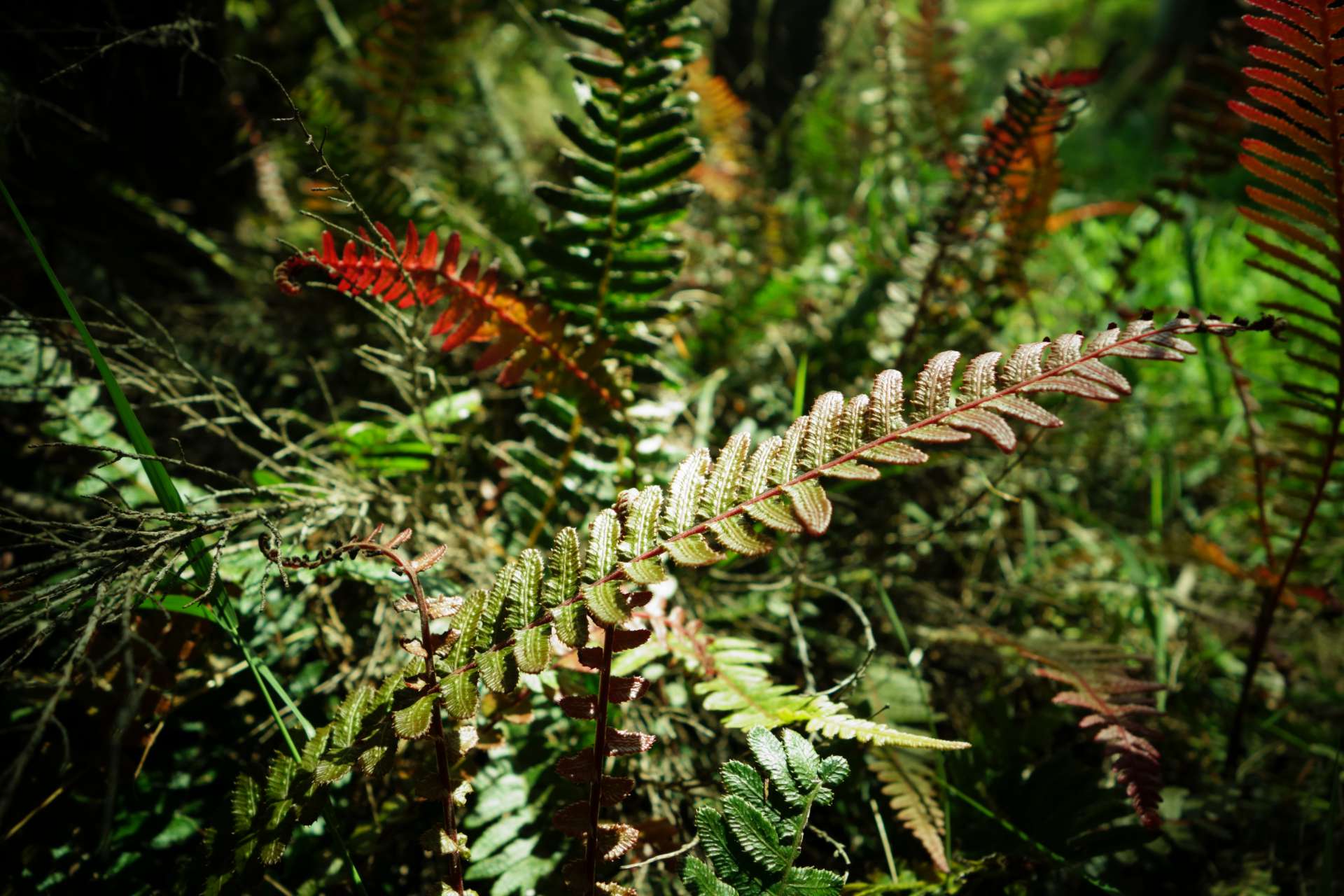

The nice lady at the tourist information office in Monganui also suggested that we should go south to Taupo. There would be a very nice track that led out to a peninsula and offered a great view back.
Indeed, it was worth driving back, because the next 2 days had great weather, and the landscape that we had left behind on the way there was completely transformed! It's incredible how much of a difference better light can make. Suddenly, you can see much further and the colors are just amazing. Take a look:

Here are these moss-covered (oaks?) again:
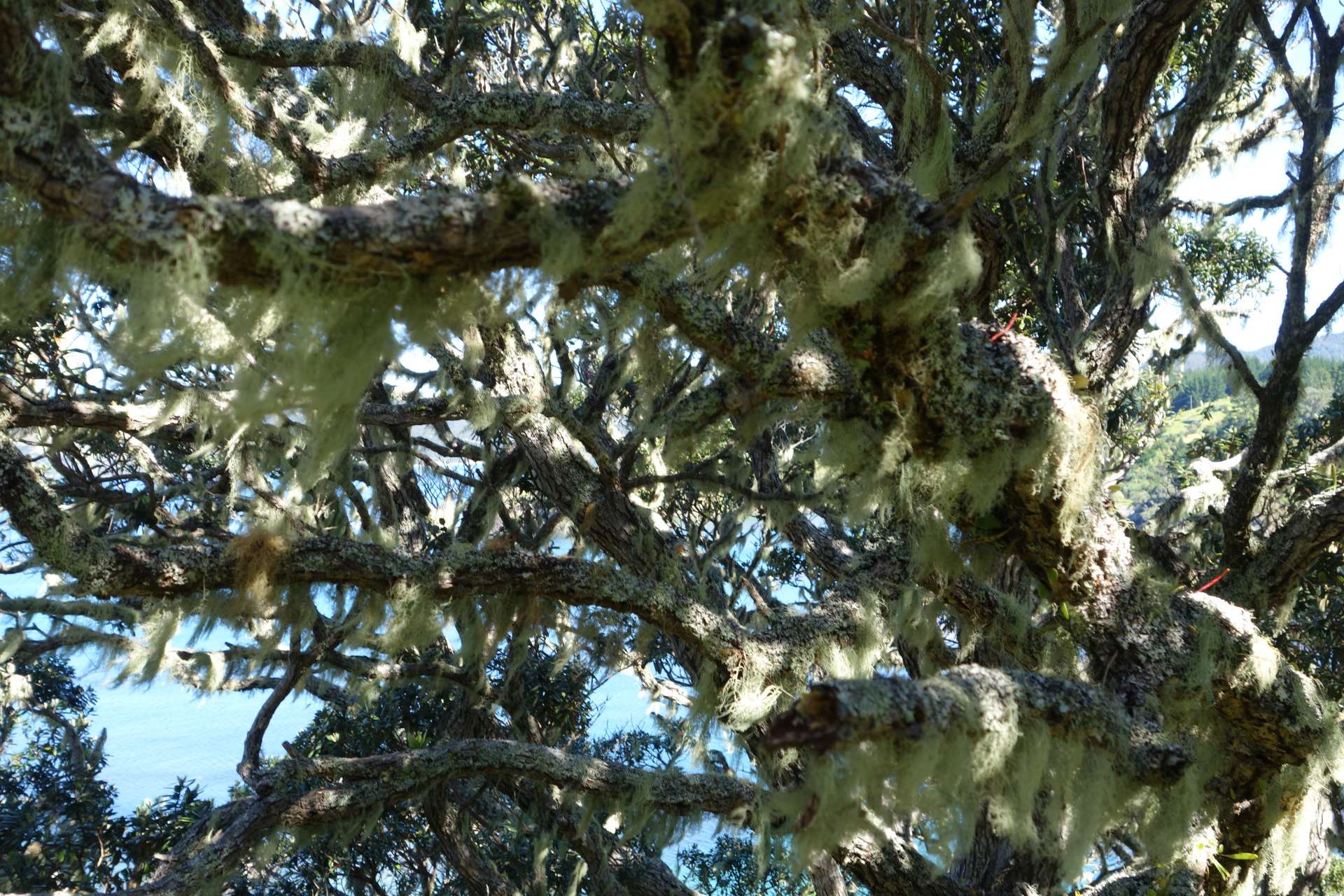

The peninsula, where we hiked along, with a view back to the land, just as promised by the tourist information:
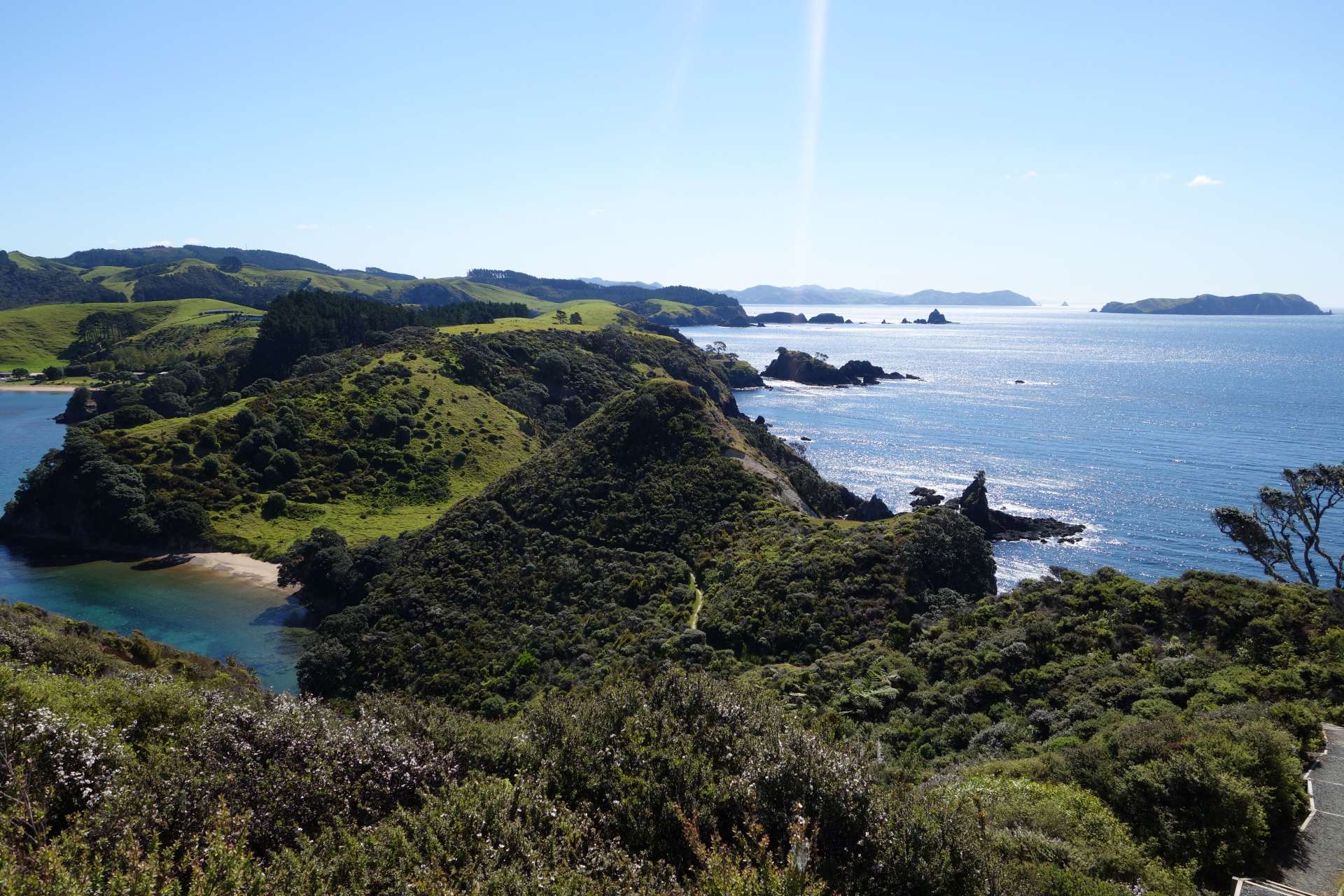
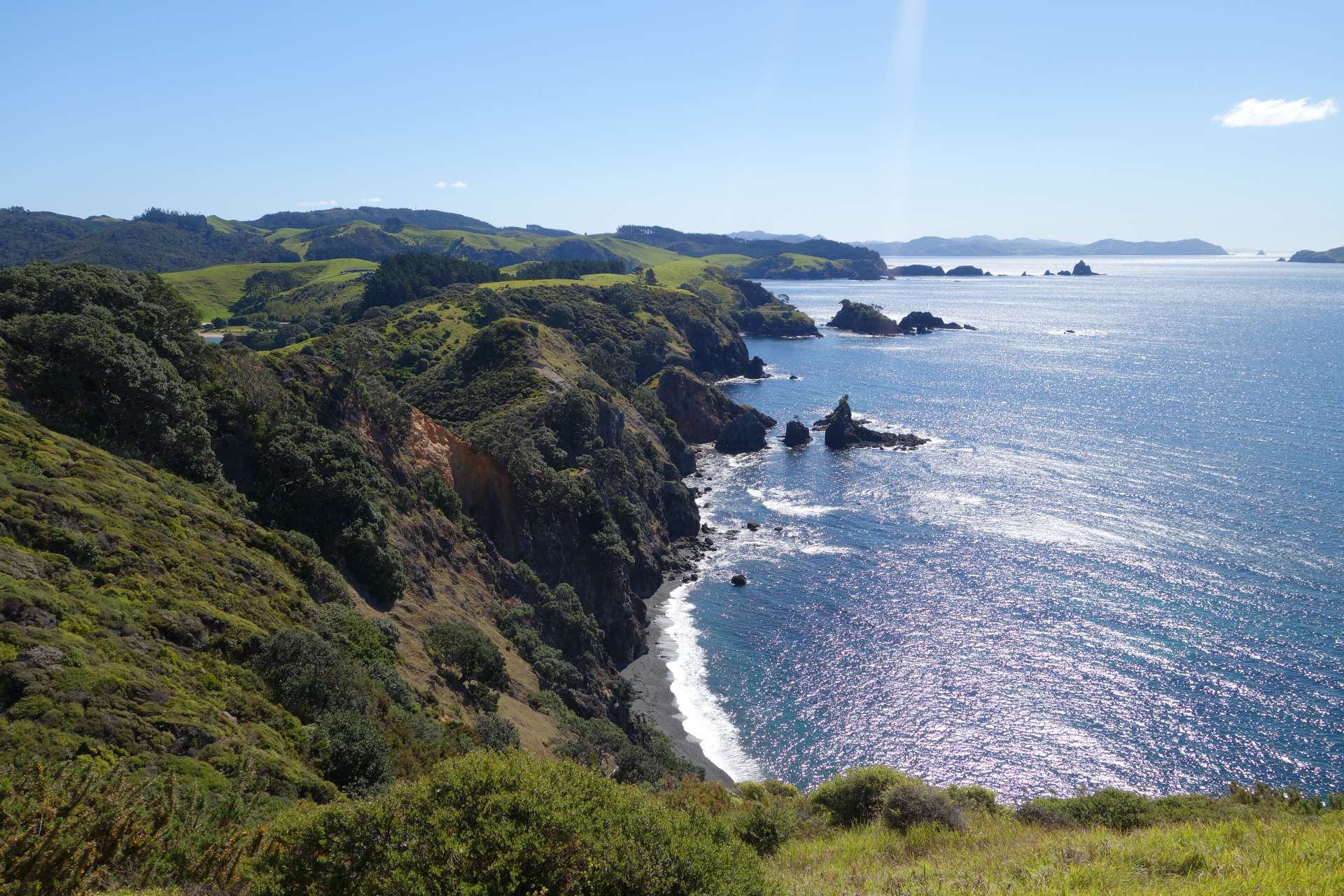
Sweaty and hot when we reached the top. We can't go further, so we have to go back.

Hannes treated himself to a cooling off in the (yes, still cool) sea when we reached the bottom:

************** Puketi Forest **************
Since we had already driven quite a way south, we wanted to visit the Puketi Forest. It is one of the last areas with a contiguous, original forest area, as it used to be found over a large part of the North Island. All those green hills with sheep and cows were once covered by such a forest:
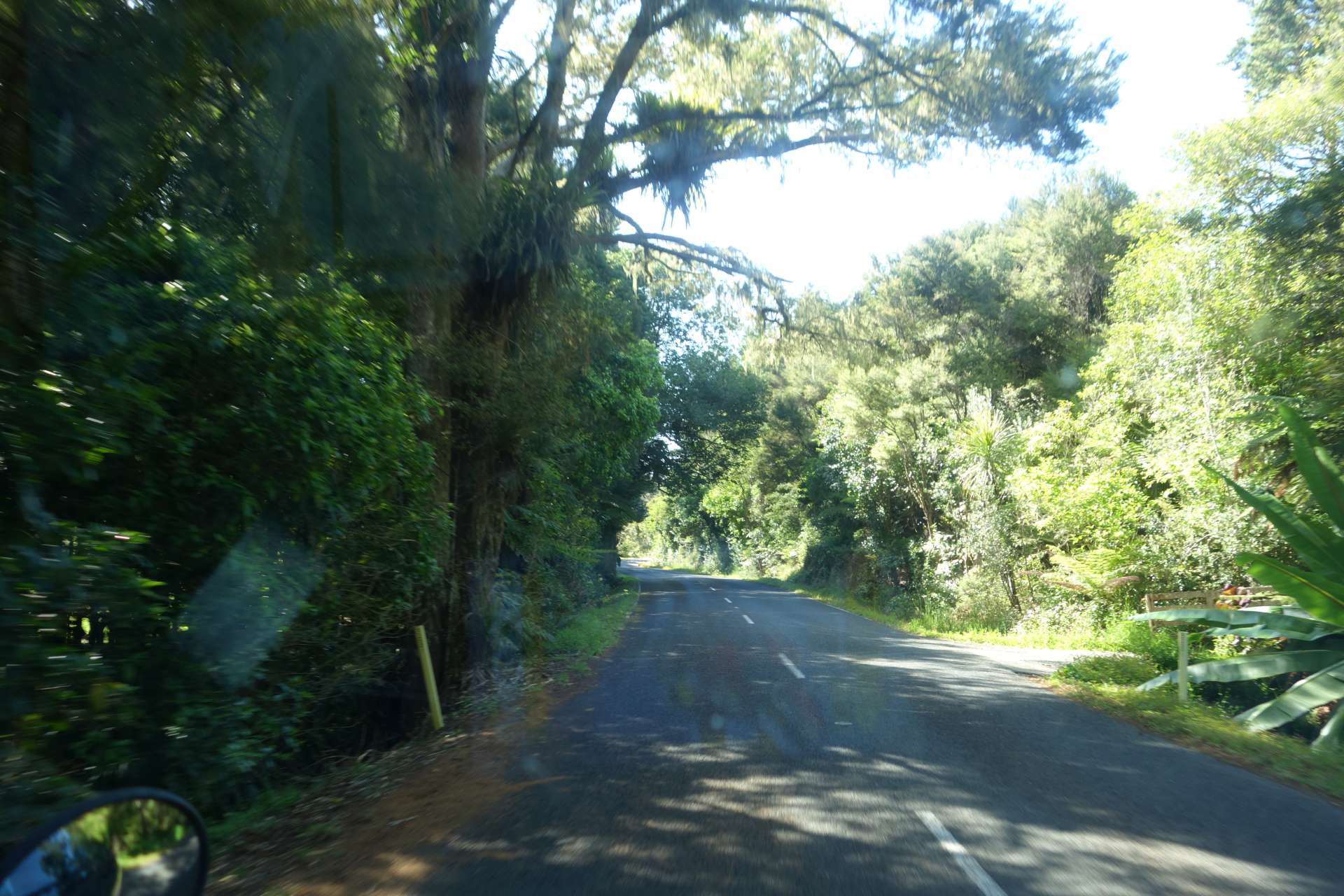


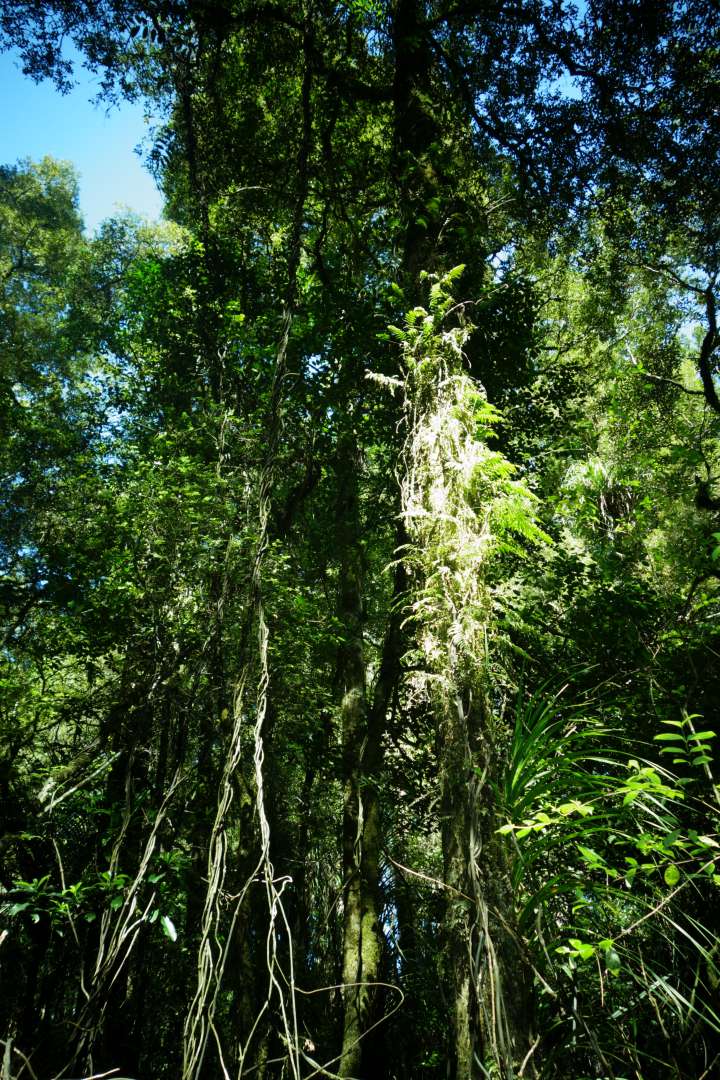
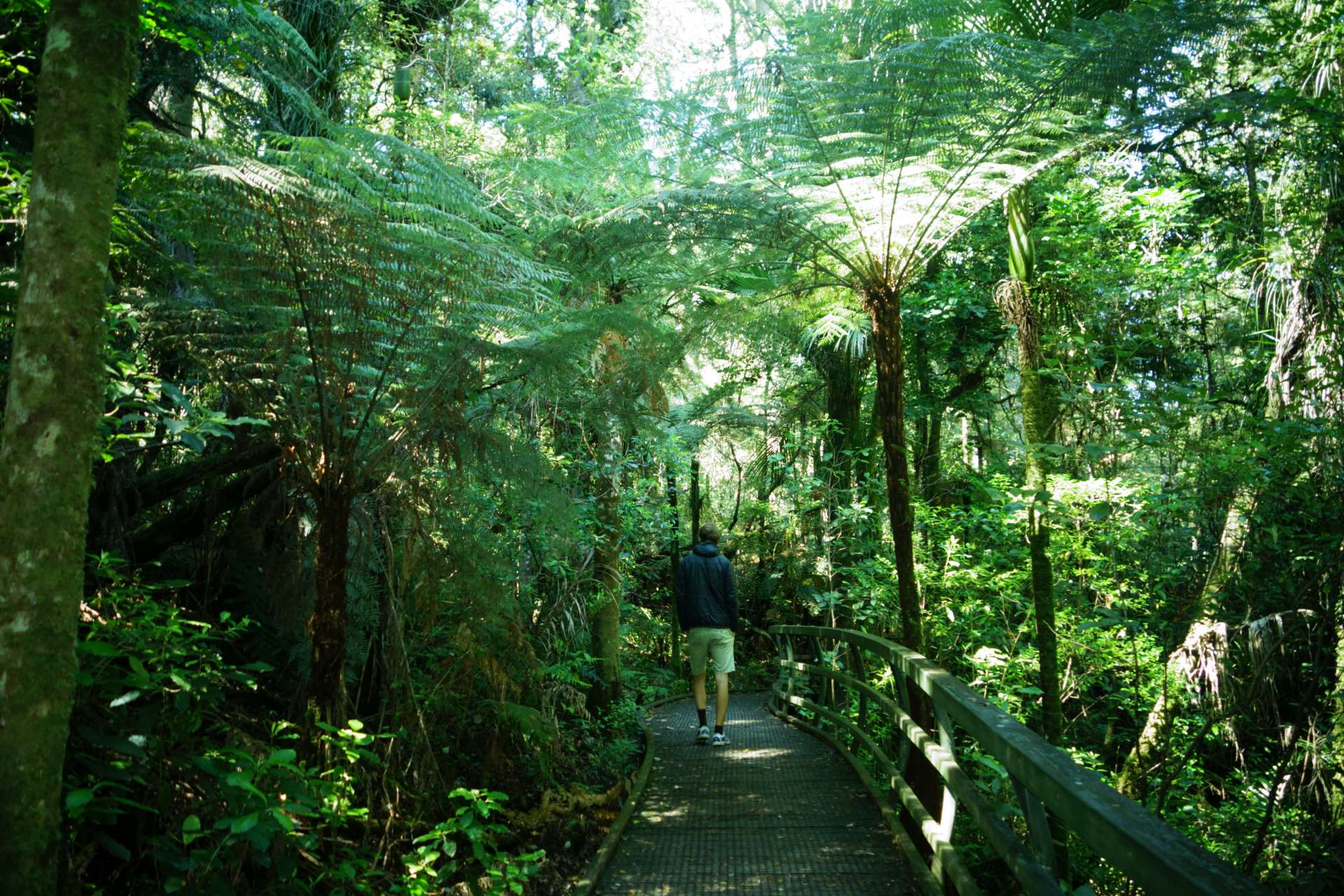
The highlight of this forest area is the variety of kauri trees that grow here. Kauris are, along with kiwis (birds and fruit), ferns, and sailing boats, a famous symbol of New Zealand. The New Zealand kauri is still the tallest tree species in New Zealand, reaching up to 50 meters in height. The largest specimen in the 1870s had a trunk diameter of 8.54 meters (circumference 26.8 meters). The age of the largest living specimen (51.2 meters high, 13.77 meters trunk circumference) is estimated at 1500 years.
Here are a few of the many kauris in the Puketi Forest:


The wood of the kauris is incredibly hard. Even the bark feels more like stone than wood. With the arrival of white settlers, the number of kauris was greatly reduced, and they are no longer used today, as they were in the past, for the construction of ships, houses, furniture, wall paneling, fences, barrels, tubs, mining, ... *heaves a sigh*.
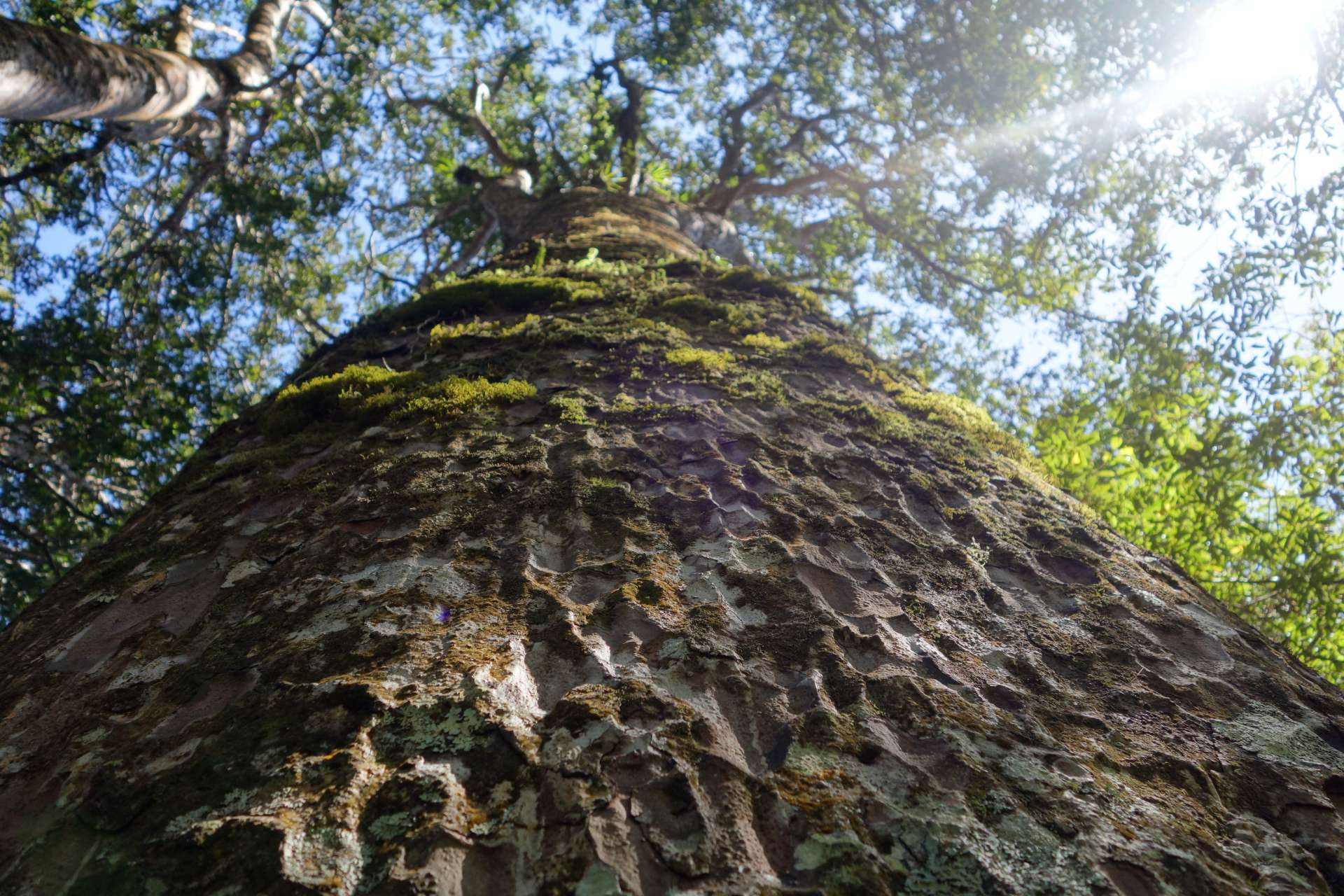
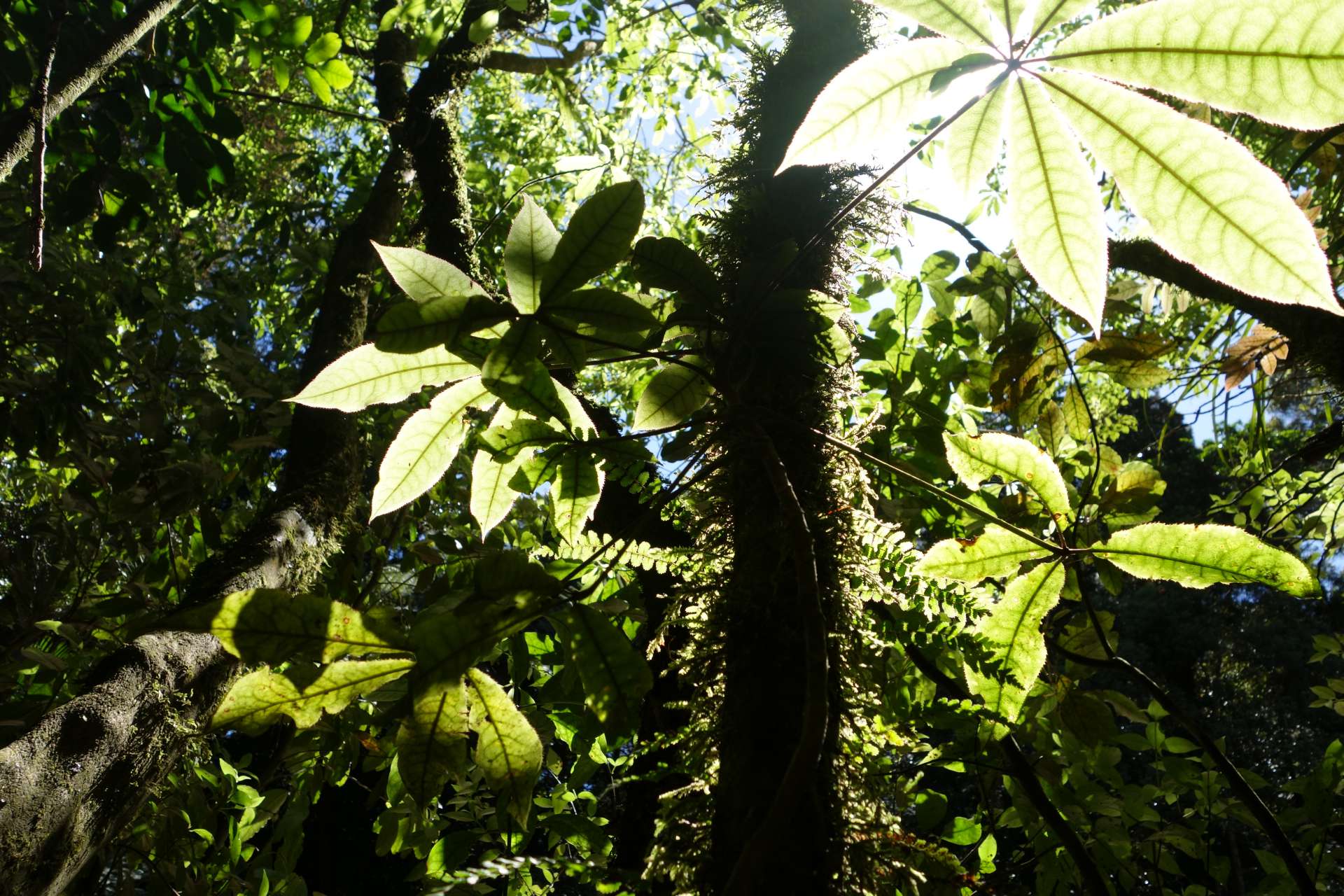
And because it was so beautiful, we took another walk a bit further south in the same forest area:
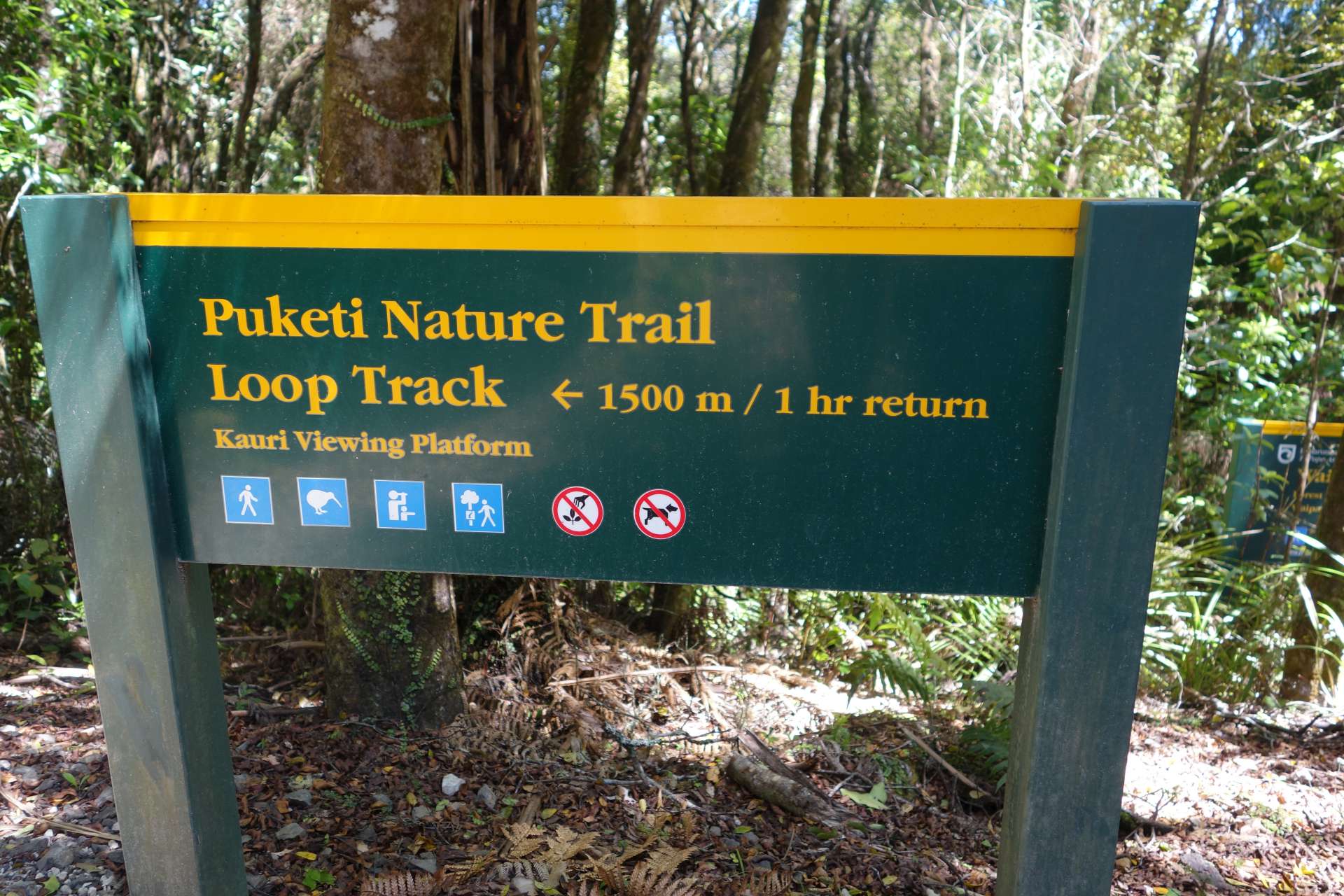
At the beginning of the trail, there was a shoe cleaning station, as you often find in the national parks. The kauris have been dying from a strange infection (Kauri Dieback Disease) for a few years now, and efforts are being made to contain it as much as possible - even though it is not known whether cleaning shoes helps.
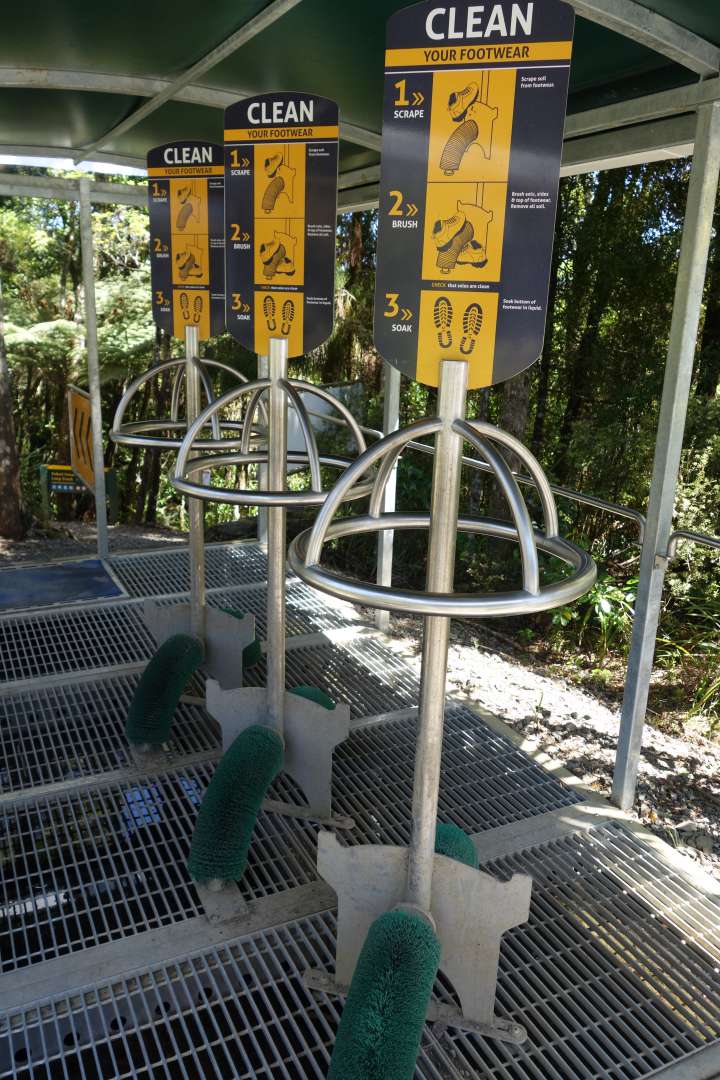
Kiwis are said to live here as well. We didn't see any, so we just took a photo of an information sign:
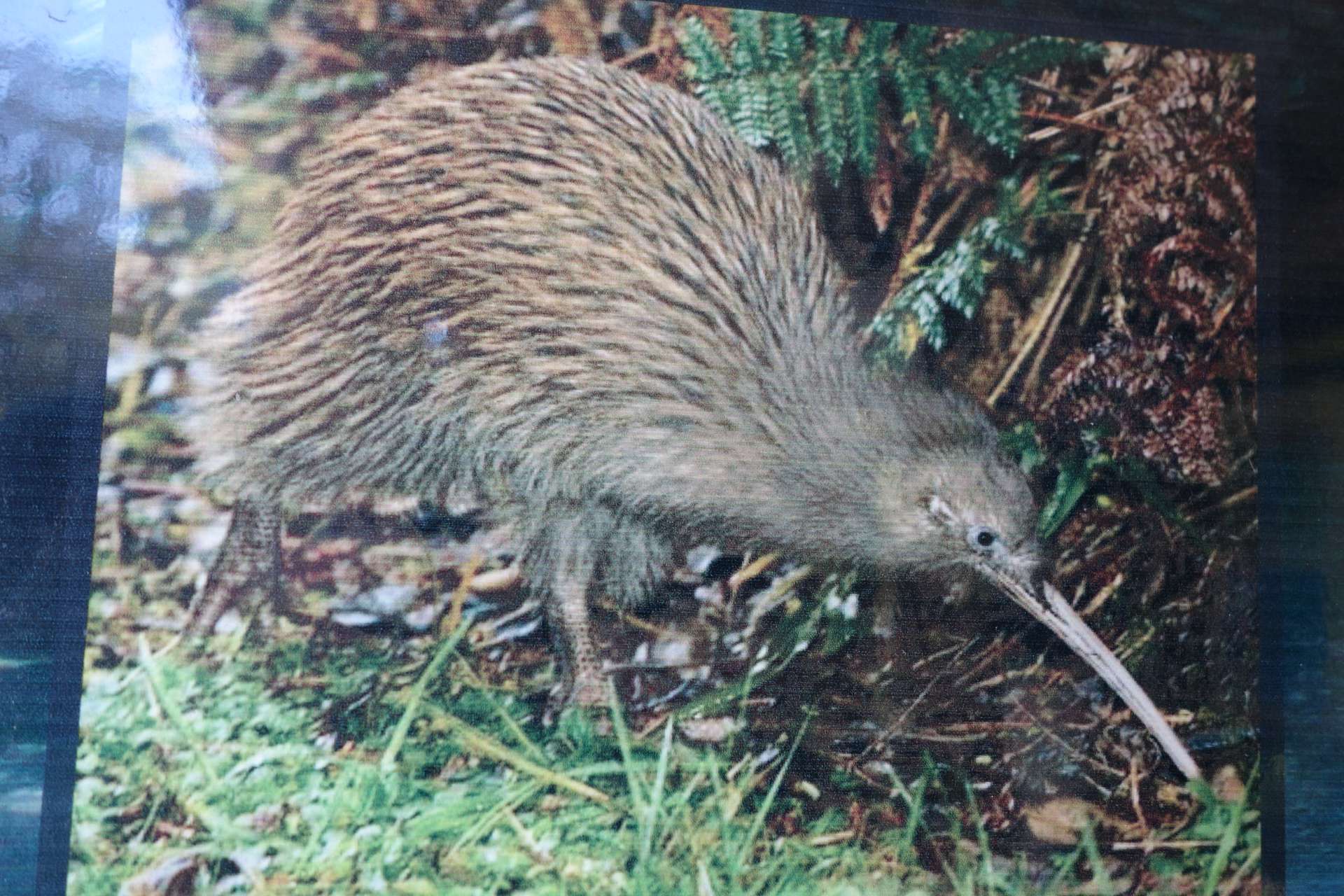
....but you can't expect to see kiwis in broad daylight. They are crepuscular and nocturnal after all.

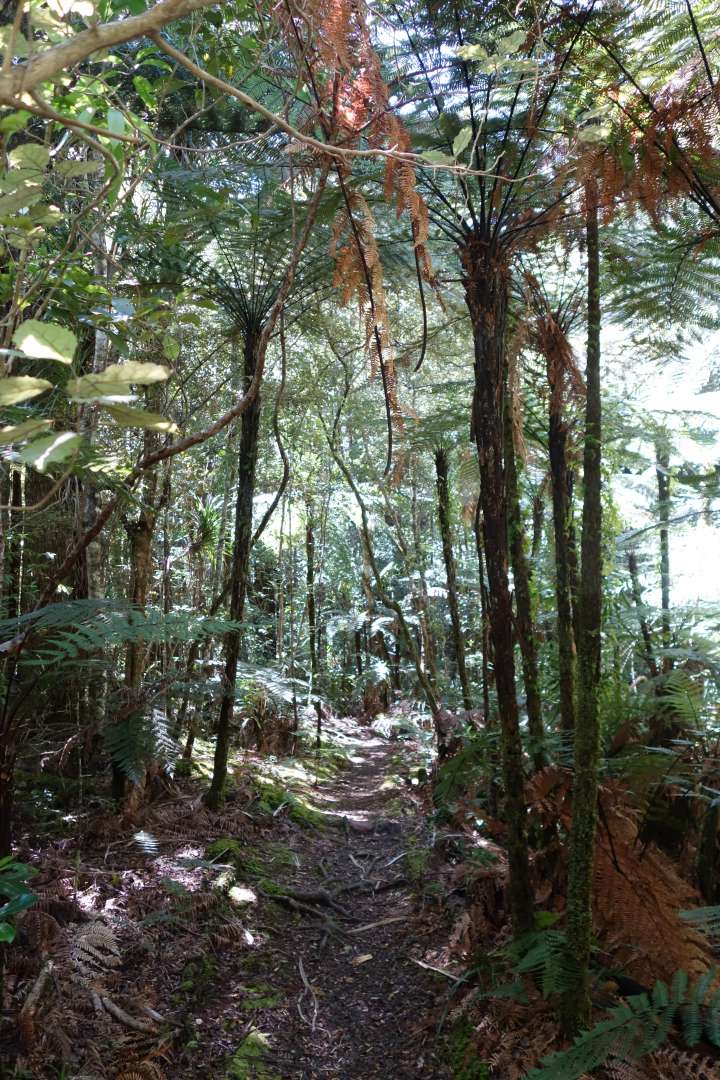
On the way back north, we took a 'quite different' road that led across the country instead of along the coast (from Mangamuka to Totara). To the dismay of our bed sheets, which were completely dusty afterwards, this route was on gravel roads. But it was worth it, because we were able to take a break in a completely different looking piece of forest along the way, which was apparently commercially planted and used, because the trees here were more reminiscent of the Harz Forest than the original jungle. It's quite interesting how the landscape changes so dramatically within a few kilometers (thanks to human use). We certainly found this forest pretty as well!

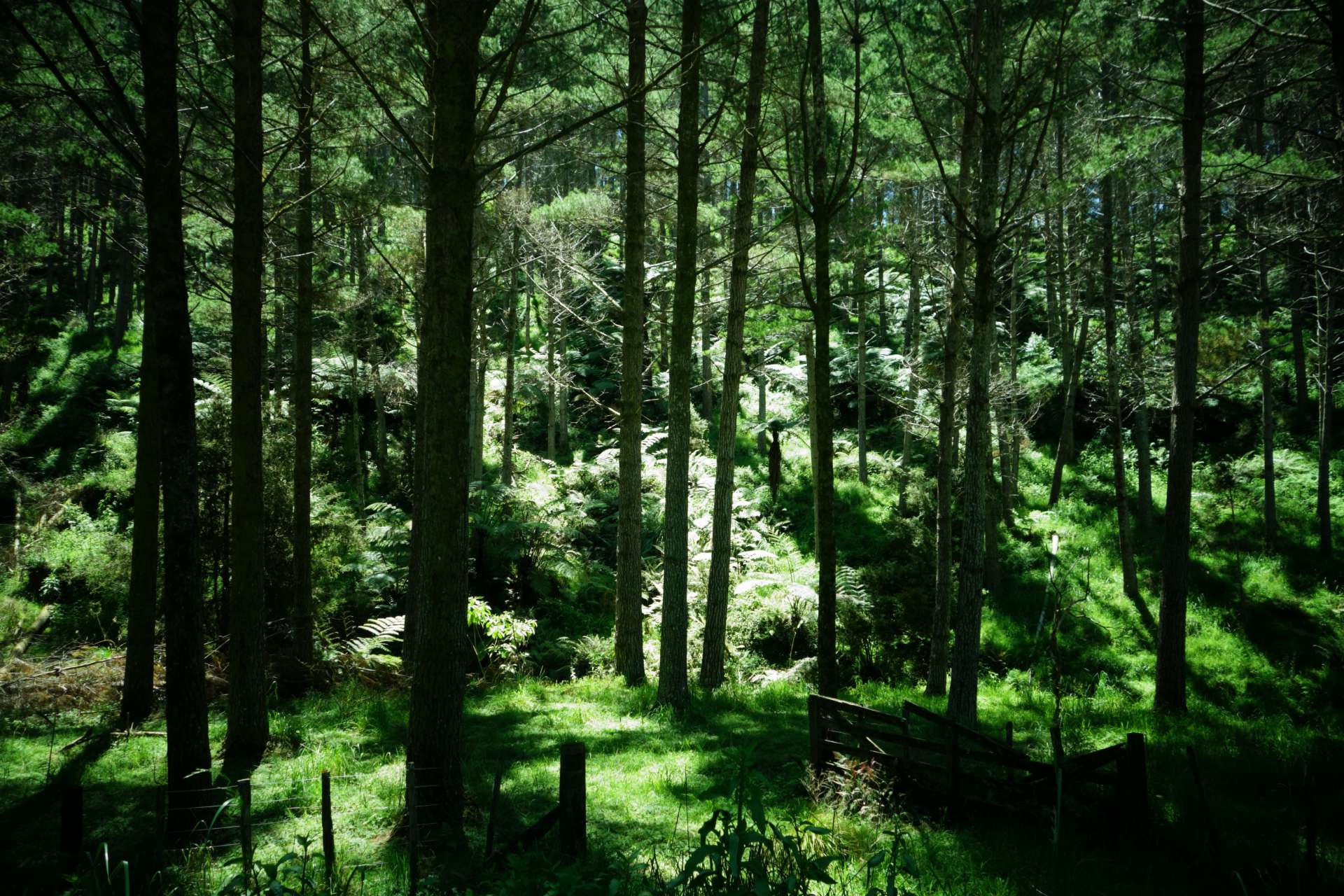
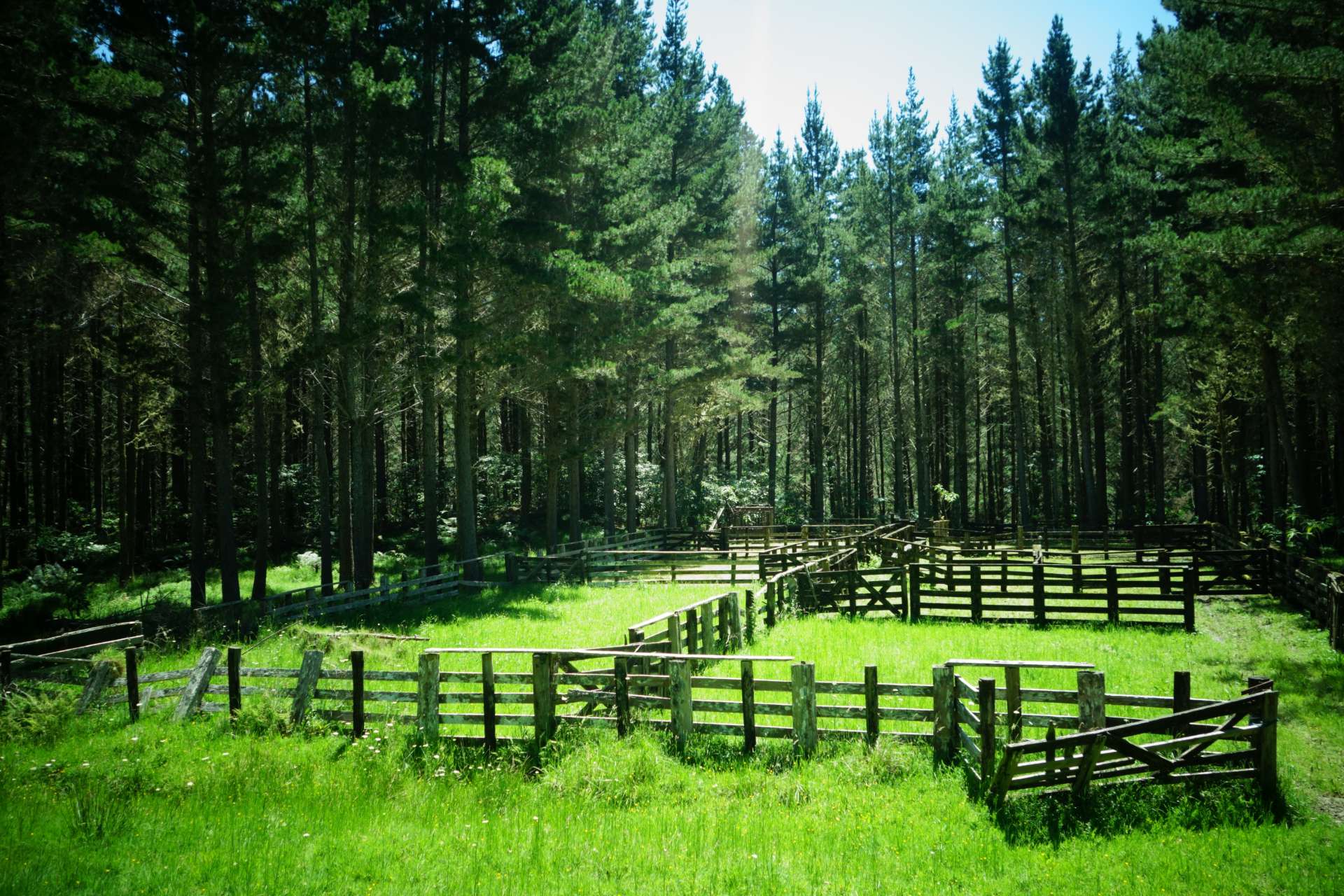
**************** Karikari *****************
Next, we went to Karikari. This is a peninsula north of Mangonui. We came here mainly because Evan (Anette's New Zealand friend with whom we celebrated last weekend) gave us a key to a small beach hut that belongs to his family and is for sale. He offered that we could stay on the property. The further north we go, the fewer free camping spots there are for camper vans - so it was a good offer!

When we arrived at the beach (called Tokerau Beach), we found it rather unspectacular and the hut was so hot that we drove on after a quick shower. Here is the beach:
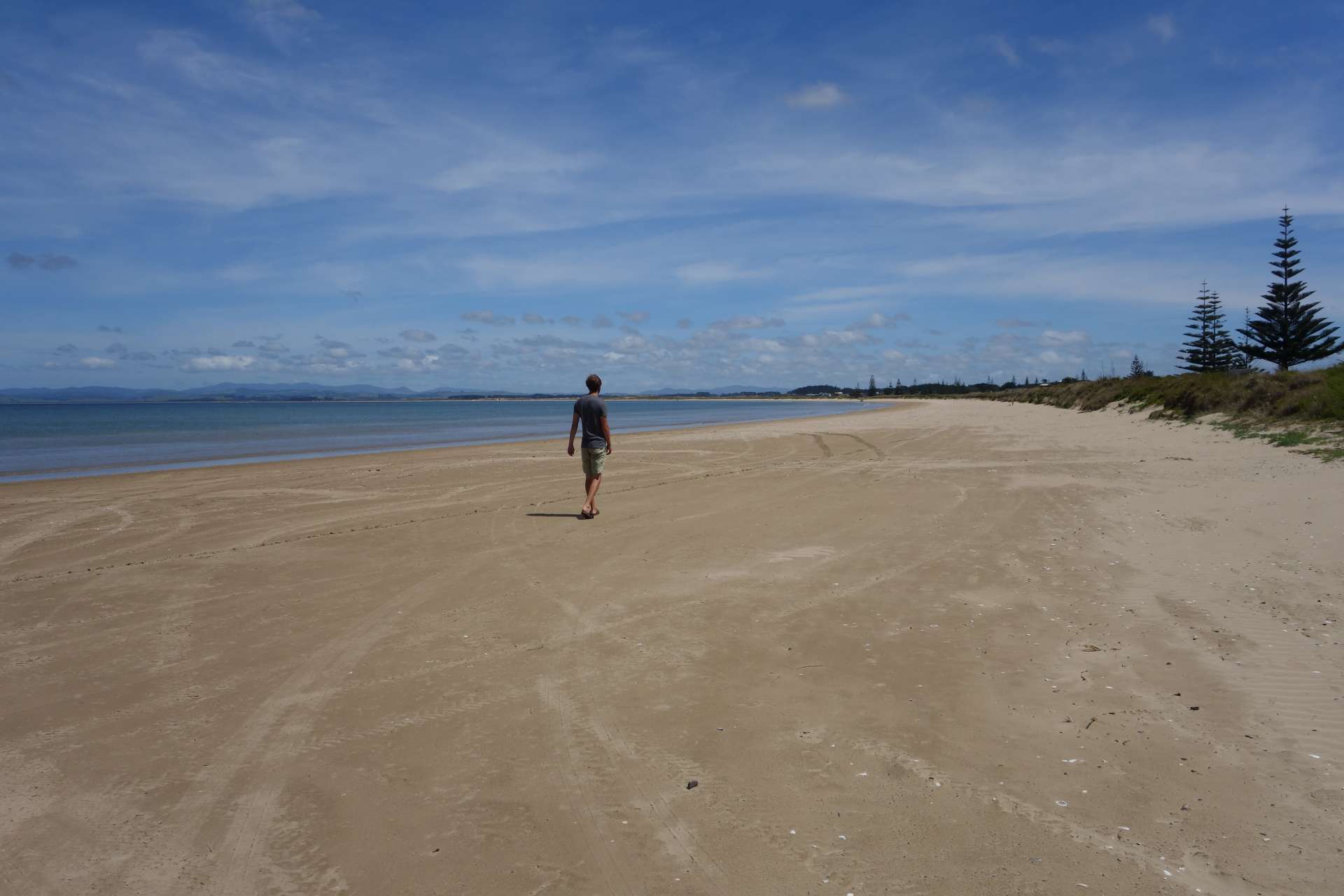
People seem to use the beach more for trips with jeeps, quads, and dogs.
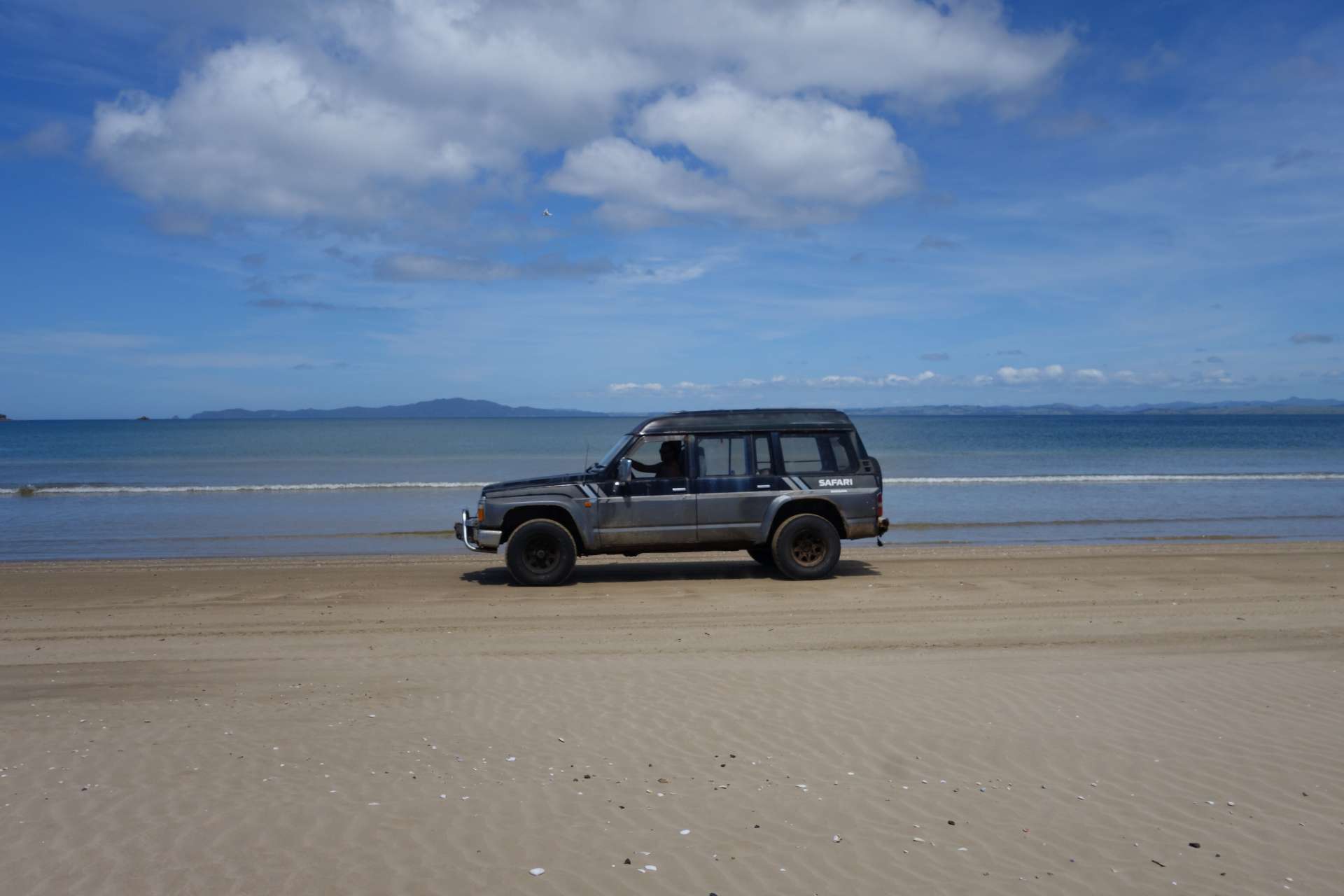

Maybe it's a matter of taste, but compared to the beautiful bays with grass-covered hills and moss-covered trees, we found the beach rather boring. What do you think? Do you agree with us?
We'll be at the northernmost point of New Zealand soon,
until then!
HanNZette.

समाचारपत्रस्य सदस्यतां गृहाण
उत्तरम् (1)
Hans-Wolfgang
Schöne Landschaften und nicht überrannt von Leuten; da läßt sich sich gut entspannen.

यात्राप्रतिवेदनानि न्यूजीलैण्ड्
